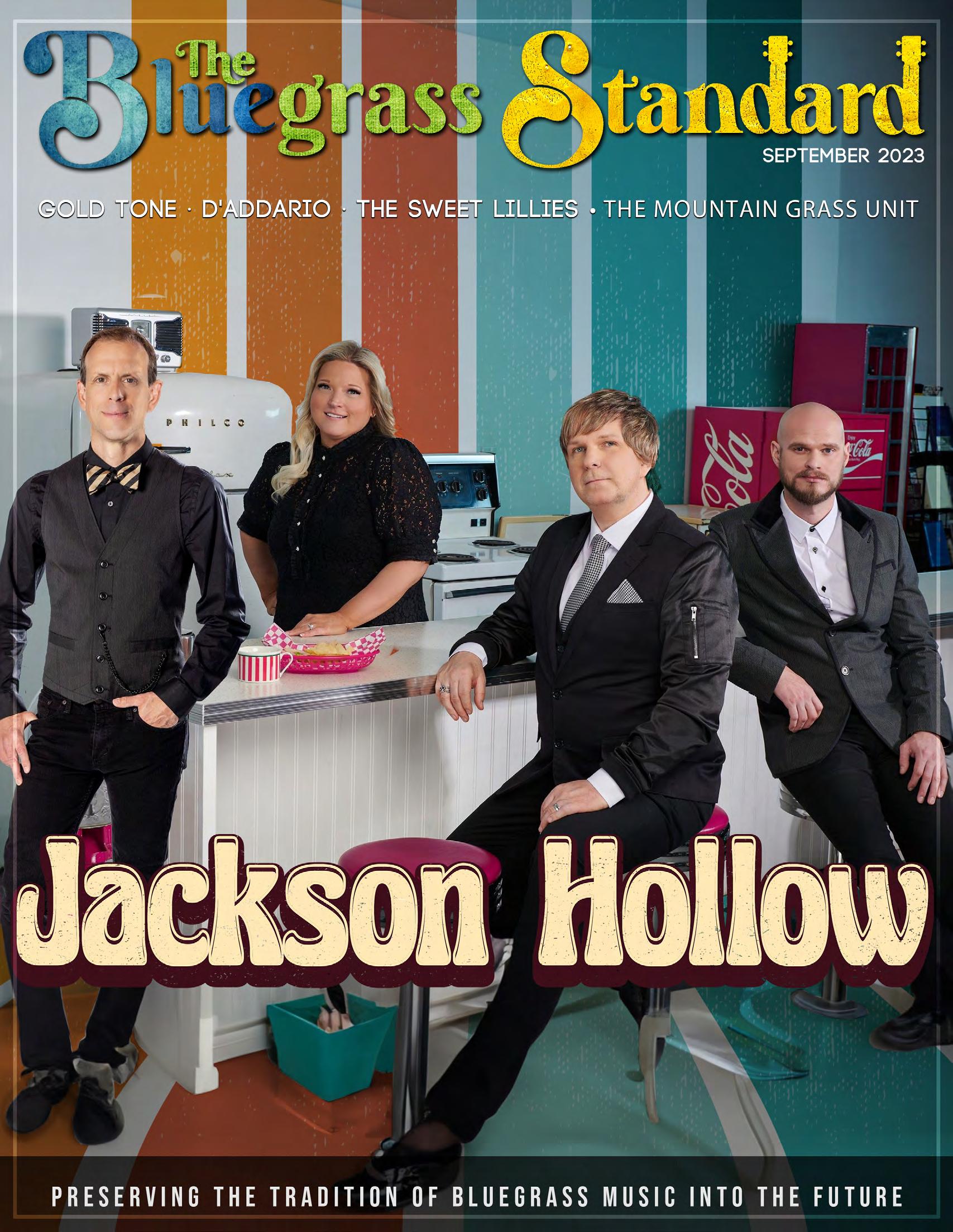

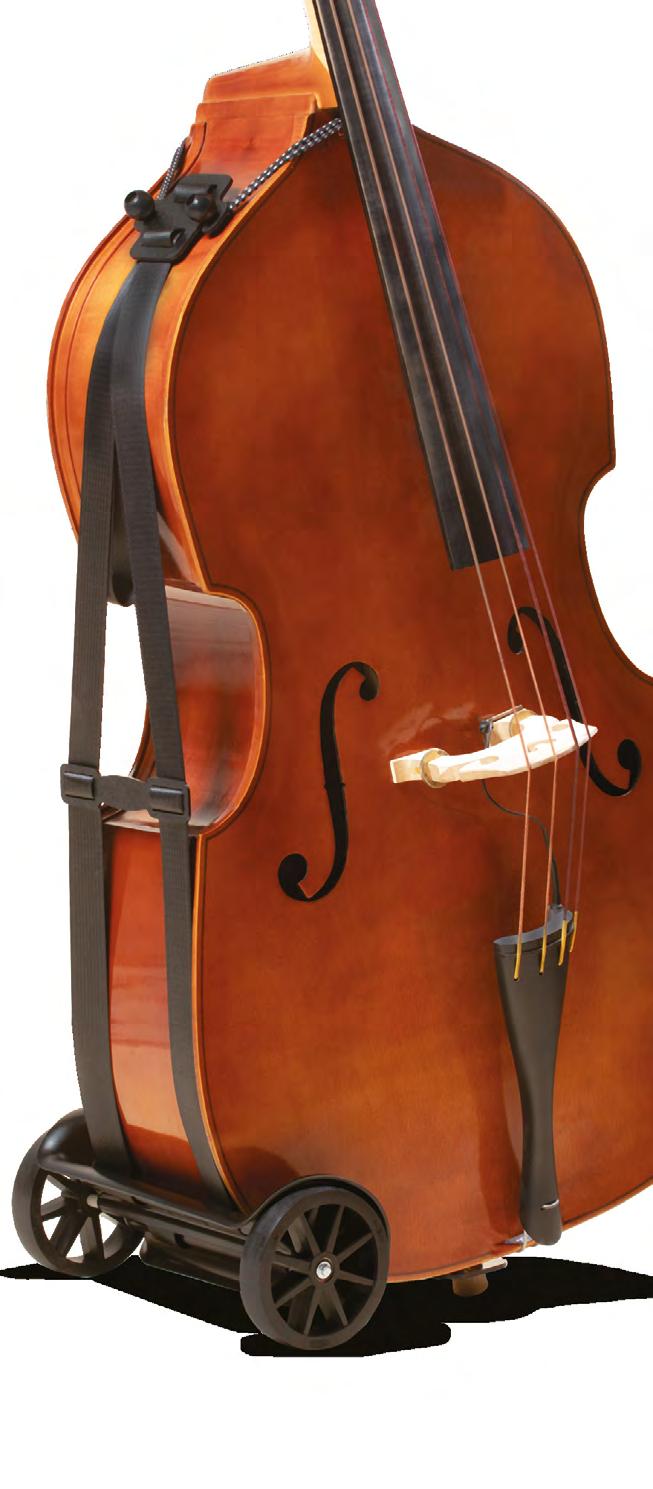
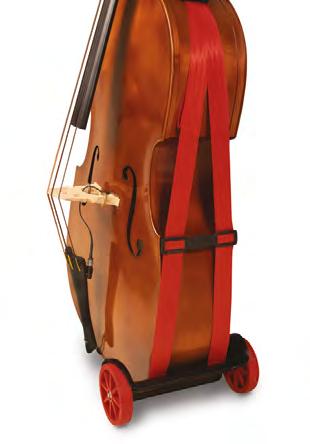

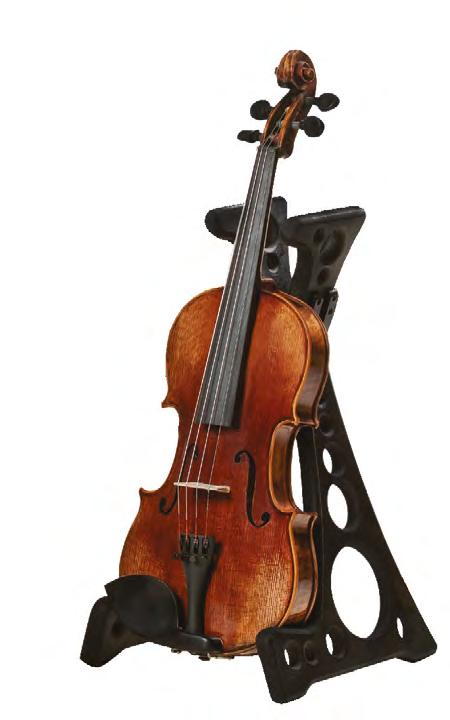



Follow us on: RCWilliamsCompany.com | 913.912.1083 Available in red for an extra splash of color. ©2022 RC Williams Company, LLC. Designed and manufactured by RC Williams. All rights reserved. DESIGNED FOR YOUR BEST PERFORMANCE Find out more about our innovative products today! THE AMAZING DBL BASS BUGGIE® We’re home of the original double bass transport. THE AMAZING BASS STAND Keep your upright bass secure and a comfortable seat while you’re performing. STUDIO G STAND A versatile option for guitarists in the studio or on the stage. Protection for your instrument and comfort for the performer. THE AMAZING MINI X STAND Unique hinged “x” format for smaller stringed instruments such as violins, violas, mandolins, and most ukuleles. Available in multiple heights and natural finish. 2

3

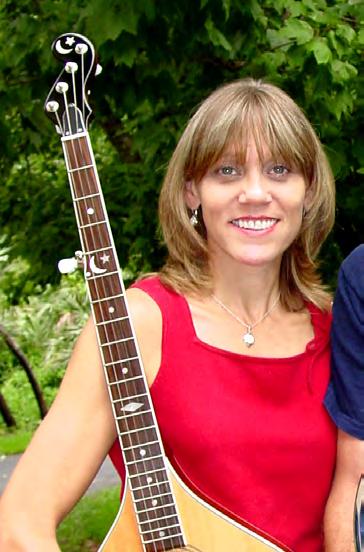

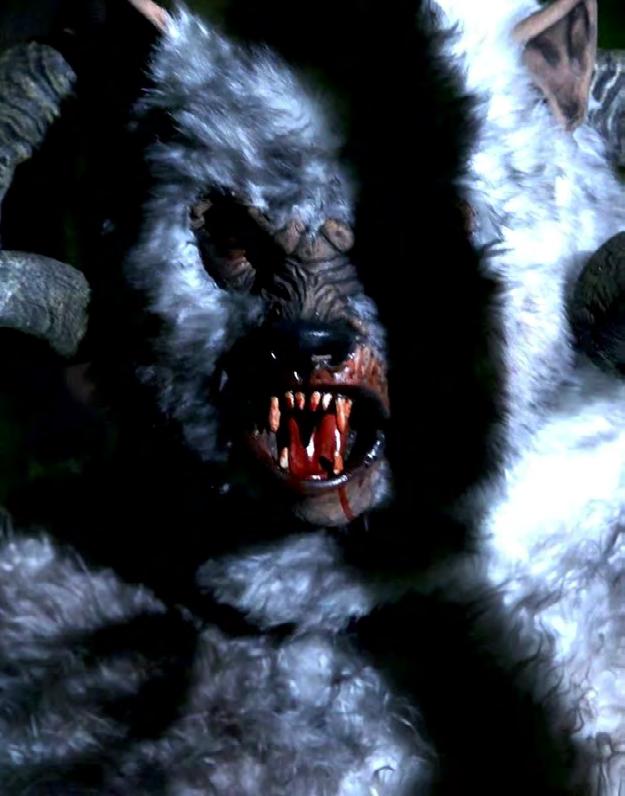
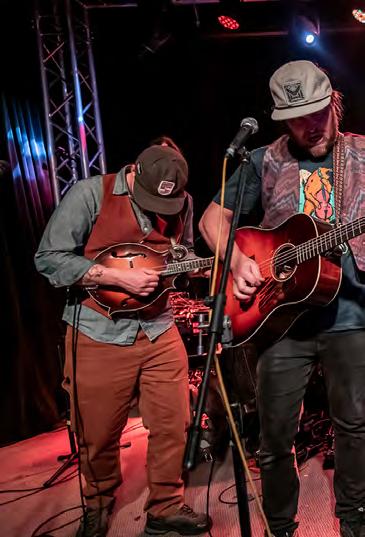

40 54 50 4
OUR CHOICE
The Bluegrass Standard is a life-long dream of Keith Barnacastle, who grew up in Meridian, Mississippi. For three years, Keith brought the Suits, Boots and Bluegrass Festival to Meridian. Now, with the Bluegrass Standard, Keith’s enthusiasm for the music, and his vision of its future, reaches a nationwide audience every month!

Keith@TheBluegrassStandard.com

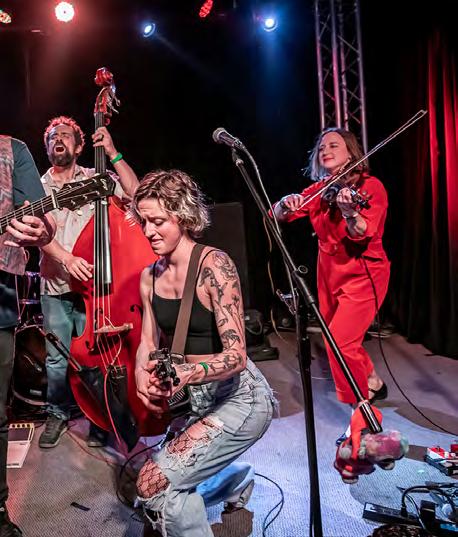

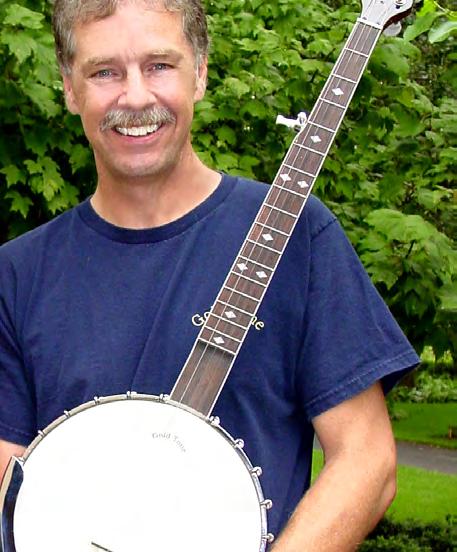
12 5 CONTENT FRED LOPEZ 08 PARTY GRASS 12 RACHEL BAIMAN 18 GOLD TONE 24 THE MOUNTAIN GRASS UNIT 28 THE SWEET LILLIES 34 JACKSON HOLLOW 40 LEBRON BATEY 46 D’ADDARIO 50 STORY TELLING IN THE MTNS 54 FAN PHOTOS 58
24
Keith Barnacastle • Publisher
Our Staff
Richelle Putnam • Executive Editor/Writer


Richelle Putnam is a Mississippi Arts Commission (MAC) Teaching Artist/Roster Artist (Literary), a Mississippi Humanities Speaker, and a 2014 MAC Literary Arts Fellowship recipient. Her non-fiction books include Lauderdale County, Mississippi; a Brief History, Legendary Locals of Meridian, Mississippi and Mississippi and the Great Depression. Richelle@TheBluegrassStandard.com
Rebekah Speer • Creative Director
Rebekah Speer has nearly twenty years in the music industry in Nashville, TN. She creates a unique “look” for every issue of The Bluegrass Standard, and enjoys learning about each artist. In addition to her creative work with The Bluegrass Standard, Rebekah also provides graphic design and technical support to a variety of clients.
Susan Woelkers • Marketing
Susan traveled with a mixed ensemble at Trevecca Nazarene college as PR for the college. From there she moved on to working at Sony Music Nashville for 17 years in several compacities then transitioning on to the Nashville Songwritrers Association International (NSAI) where she was Sponsorship Director. The next step of her musical journey was to open her own business where she secured sponsorships for various events or companies in which the IBMA /World of Bluegrass was one of her clients.
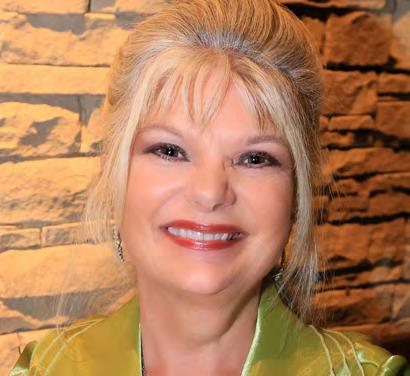
Brent Davis • Contributor

Brent Davis produced documentaries, interview shows, and many other projects during a 40 year career in public media. He’s also the author of the bluegrass novel Raising Kane. Davis lives in Columbus, Ohio.

6
Mississippi Chris Sharp • Reviewer
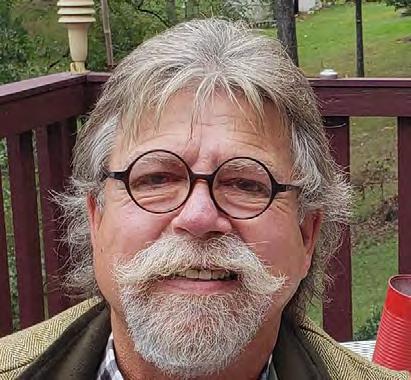
Singer/Songwriter/Blogger and SilverWolf recording artist, Mississippi

Chris Sharp hails from remote Kemper County, near his hometown of Meridian. An original/founding cast member of the award-winning, long running radio show, The Sucarnochee Revue, as featured on Alabama and Mississippi Public Broadcasting, Chris performs with his daughter, Piper. Chris’s songs have been covered by The Del McCoury Band, The Henhouse Prowlers, and others. https://mississippichrissharp.blog
Susan Marquez • Journalist


Susan Marquez is a freelance writer based in Madison, Mississippi and a Mississippi Arts Commission Roster Artist. After a 20+ year career in advertising and marketing, she began a professional writing career in 2001. Since that time she has written over 2000 articles which have been published in magazines, newspapers, business journals, trade publications.
Kara Martinez Bachman • Journalist

Kara Martinez Bachman is a nonfiction author, book and magazine editor, and freelance writer. A former staff entertainment reporter, columnist and community news editor for the New Orleans Times-Picayune, her music and culture reporting has also appeared on a freelance basis in dozens of regional, national and international publications.
Candace Nelson • Journalist
Candace Nelson is a marketing professional living in Charleston, West Virginia. She is the author of the book “The West Virginia Pepperoni Roll.” In her free time, Nelson travels and blogs about Appalachian food culture at CandaceLately.com. Find her on Twitter at @Candace07 or email CandaceRNelson@gmail.com.
7
Fred Lopez
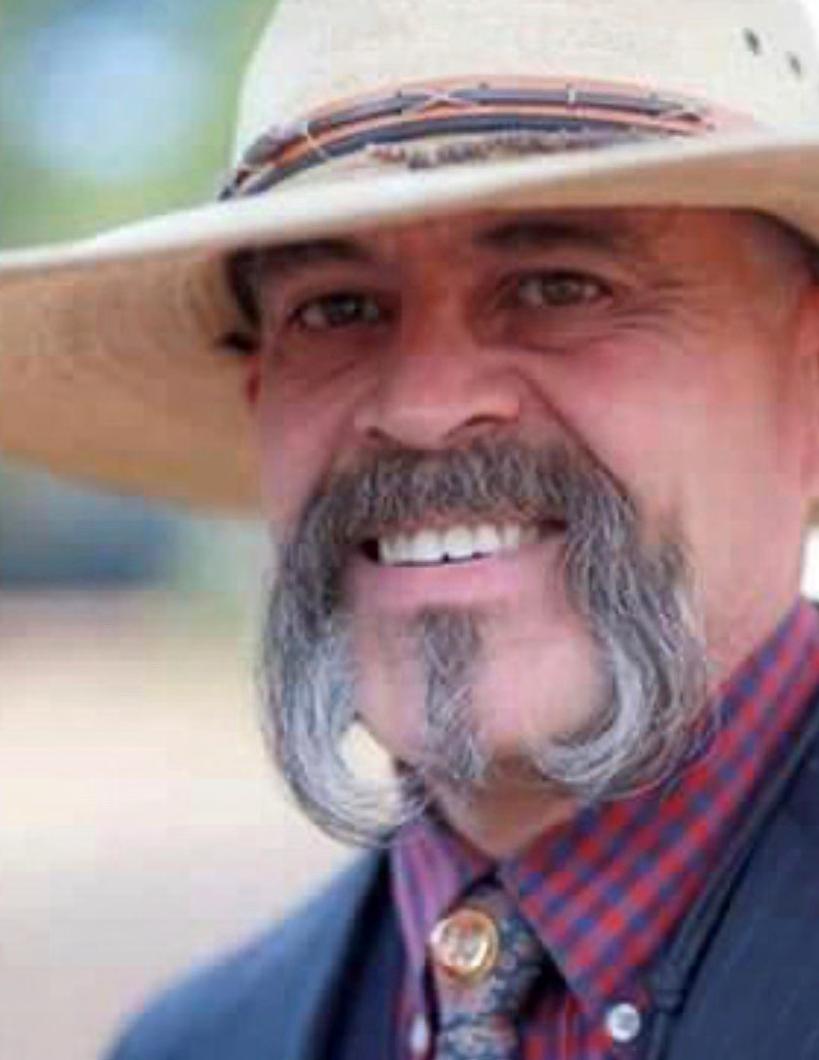

8 Susan Marquez
High atop Juniper Ridge, just outside Albuquerque, New Mexico, Fred Lopez reflects on the amazing life he has lived. He shares a home with his 96-year-old father. “I learned about music from my mother,” he recalls. “She taught me how to play claw-hammer style on a Martin ukelele that her mother got for her.” Fred says his mom also played old-time fiddle and she had a guitar. “I wanted a banjo, so I saved my money over a lot of summers to buy one.”
Fred grew up in Kensington, Maryland. “My mom was Irish, and her father was in the Navy, so they traveled a lot. She was classically trained on the piano.” When Fred was “either 12 or 14,” his mom sent him to take music lessons, but that didn’t work well for him. “I played two-finger banjo, and scratch guitar I learned from my mama. I loved country blues and bluegrass, as well as religious and old-time music.”
Over the years, Fred made a point to go hear some of his favorite artists play. He grew up listening to artists from the D.C., Virginia and Maryland area including The Seldom Scene, The Country Gentlemen, and the Johnson Mountain Boys. Among his biggest musical influences are The Stanley Brothers, Martha and Eddie Adcock and Tom Gray.
“I asked people I admi red to sign my stuff. Some people even recorded using my instruments.” Fred’s parents retired from working for the Government and moved to New Mexico. “I came out here in 1985 and

started working at some ranches.” Over the years, Fred has amassed an impressive collection of autographs from some of music’s greats. “I started asking folks to sign my guitar.” About ten years ago, Fred says he had an idea to start recording some of his bluegrass heroes. “My idea was to bring people together through music.” He had such a great response that instead of one album, he is breaking it into two. “One is the Mountain West sessions, and the other is the Mountains East sessions.” So far he has recorded with 22 musicians from both sides of the country.
“I’ve put 67,000 miles on my car,” he laughs.
He has recorded a variety of artists. “I’ve got people from age six up to age 92.” Fred invited the six-year-old into the studio during a recording session and asked her to sing a line.
“It was as pure a voice as I’ve ever heard,” says Fred. The producer of the Mountains East album is Tim Coffey, and Dave Barklay is producing the Mountains West album. One of Fred’s favorites so far is Jay Lewis, and 82-year-old who hasn’t recorded in twenty years. “He did an off-the-cuff recording that was very meaningful to me. It’s neat to capture these people. They are getting older, you know.”
Fred says David Castle in St. Paul, Virginia has the masters for the albums. “He has been very gracious to me all these years. I didn’t even realize we had enough material for two albums until David mentioned it.” The songs on the album are all very special and meaningful. “Each
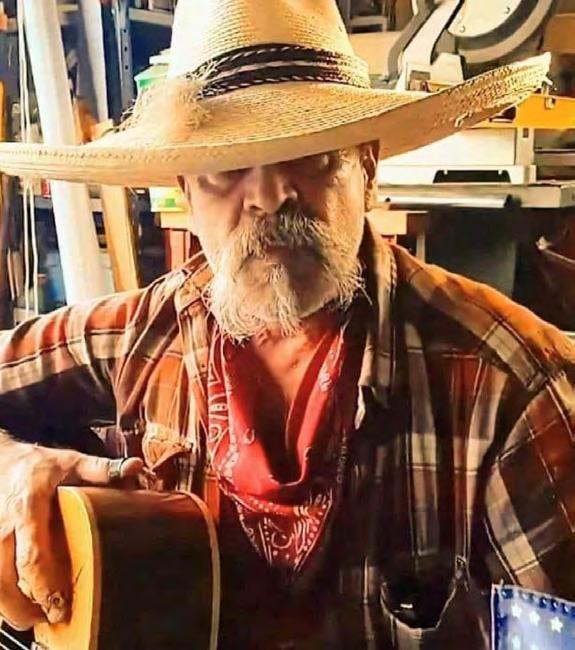
9
song was selected by the artist, and each song means something special to somebody.” Proceeds from the sale of the albums will go to “some very talented kids,” says Fred. “We want to help them record. We try to help because we can all look back and remember all those who helped our careers.”

Fred says he stopped playing music for a few years. “I had surgery in 1997 and I had to learn to play all over again.” The guitar is Fred’s primary instrument. “I also play old time claw hammer banjo a little. I was asked to go on tour playing guitar with a rockn-roll fellow and we toured all over the country. But bluegrass is what I love the most. I mainly stick with old-time.”
Fred is excited about his album project, and he is playing more these days. “I’m getting back out there. Last year I had a few people ask me to play with them at Ralph Stanley’s festival.”
His two sons, Adam and Fred Jr., are grown with children of their own. Fred is now a grandfather as well as a great-grandfather. “I’m very content with my life,” he says. “I just wanted to make a record before I died. I love all kinds of music and I wanted this project to be collaborative, something to bring people together. There are going to be 16 cuts on the first album. Sixteen. I have such great people in my life. I am very blessed.”
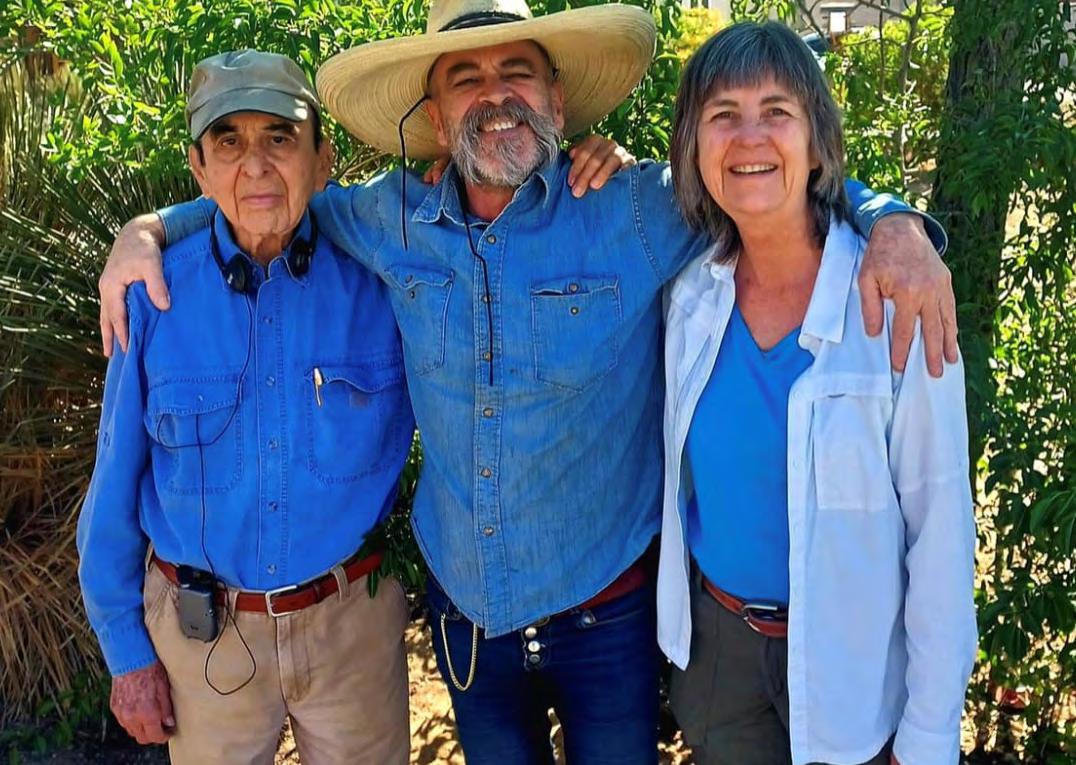
10

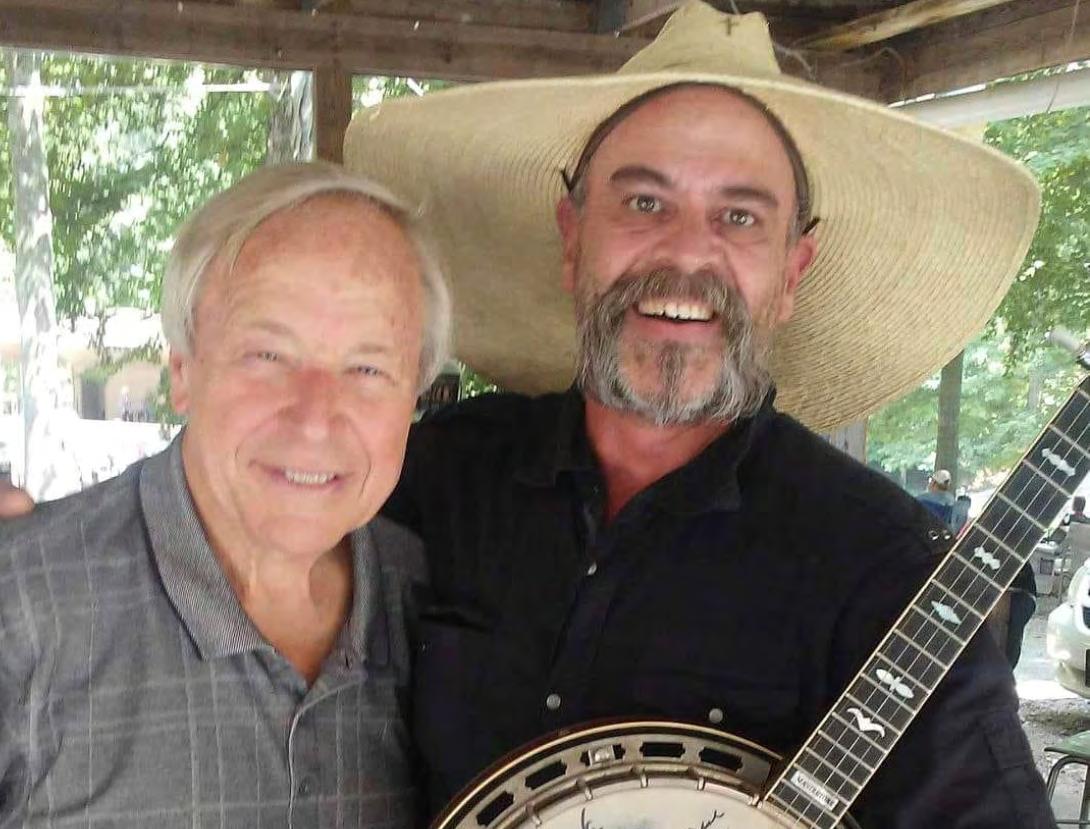
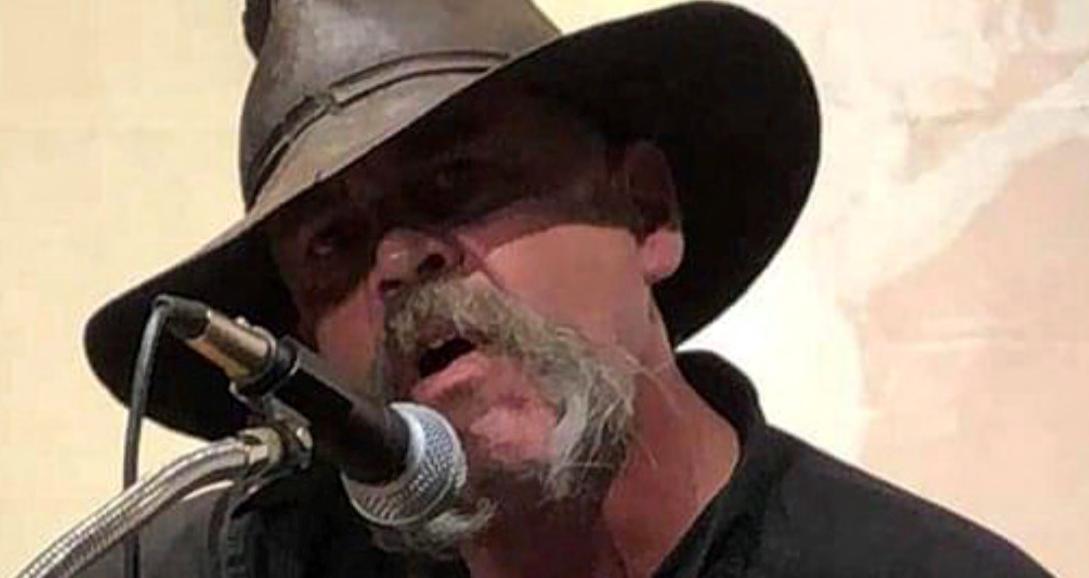
11
PARTY
Pixie and the Partygrass Boys – hailing from the Wasatch region of Utah – have made great strides since The Bluegrass Standard last caught up with them in 2019. Back then, they were mostly playing locally and in a few adjoining states.

Since then, they’ve been picked up by a record label, Americana Vibes; signed with a management company; and have been touring more extensively across the entire U.S.
Their first release with Americana Vibes dropped in May. It’s called “The Chicken Coop Vol. 1” and includes some guest artists.
12
Kara Martinez Bachman
GRASS
“It’s a really fun collection of high-energy covers we’ve been doing throughout the years,” explained Pixie and the Partygrass Boys mandolin player and vocalist Ben Weiss.
For instance, there’s a contribution from Ahn Phung, a flutist for Boston-based string band Twisted Pine. Andy Hall – of the Grammy Award-winning Infamous Stringdusters – guests on a song with his dobro. In a cover of “The Devil Went Down to Georgia,” Pixie and the boys change the place – where the devil jumped up on a hickory stump – to their home state of Utah. They invited Jeremy Garrett – also of The Stringdusters – to fiddle as if he were a devil of the Wasatch.

13
Weiss is joined by the namesake of the group and the one he credits with much of the band’s theatrical energy, Katia “Pixie” Racine, who brings lead vocals and ukulele to the mix. Amanda B. Grapes takes care of fiddle and vocals; Zach Downes delivers the upright bass; and Andrew Nelson rounds out the lineup with his guitar and vocals.
While they were mostly originally schooled in jazz – and Pixie, in theater – they’ve brought their backgrounds to bluegrass in a way audiences seem to appreciate and embrace more and more as the years pass.
They regularly gig in the Pacific Northwest; across Utah; and in Montana, Idaho, and Colorado. This summer, they expanded out and toured in the Midwest and Northeast. Just one fall date on their list is a multi-day appearance at the Walnut Valley Festival in Winfield, Kansas, happening September 13 through 17.
“But the mountain west has become our home turf, so to speak,” Weiss said.
They’re aiming to soon put out their second record with Americana Vibes.
“We’re gonna do an album of all originals,” Weiss said. He expects it to be heartfelt and anthemic.
“Each of us is a songwriter. Everybody in the band,” he explained. Generally, one member of the band will bring a basic song they wrote, and then they “arrange them together as a group.”
While he said Pixie penned most of the music for the upcoming record, they’ve all originated stuff, and the real magic happens once the band gets together.
“Everybody has a different creative perspective,” Weiss said. He believes this is what gives the music its unique edge.
He said themes will range from a number Pixie “wrote for her ex-boyfriend, an ode to the love that has survived although the relationship ended” to something political. One song is called “These Chickens Eat Fascists.”
“The song is a little punk rock,” Weiss said, trying to describe its vibe. He said it addresses “the unease among classes and political affiliations.”
Weiss said one thing that has changed since we first talked to him in 2019 is that the band’s sound has become more defined.
“Partygrass has very much solidified into its own sound,” Weiss said, adding that over the years, they’ve thrown all they have as individuals – their unique backgrounds, tastes, methods – into a metaphorical cooking pot.
“Now, we’ve cooked it all down and have a good gumbo.”

14

15

16



17
RACHEL BAIMAN

18
Martinez Bachman
Kara
With a title that hints at collective disgruntlement – “Nation of Sorrow” – multiinstrumentalist, Rachel Baiman has brought an experienced team to her self-produced project. The LP – Baiman’s third – was released this spring. It “leans heavily” into her “bluegrass and old-time sensibilities.”
In addition to solo projects, Baiman’s bio includes work with fellow fiddle player and Grammy nominee Christian Sedelmyer, via the duo group 10 String Symphony. She’s also done “session and side-person” work with notable artists such as Kacey Musgraves, Kevin Morby, Molly Tuttle, and many more.
She recorded the tracks of “Nation of Sorrow” in Nashville with engineer Sean Sullivan, who has won three Grammys for his work on records by Crooked Tree, Tall Fiddler, and The Travelin’ McCourys.
Much to her delight, she was also able to snag sound mixer Tucker Martine, who has worked with artists such as The Decemberists, Neko Case, and First Aid Kit. She went out to Portland, Oregon, for a couple of weeks to complete that part of things.
“Every time I came across a record where I was like, this is how I want it to sound, it was Tucker Martine,” Baiman explained. “He’s really responsible for setting those amazing acoustic sounds.” She described sound mixing as “make or break” to a project.
The record contains her own original songwriting along with a single called “Self Made Man,” which was a “reinvention” of folk singer John Hartford’s song of the same name.

19

20

21
Baiman said songwriting is her main musical interest these days. A native of Chicago, she moved to Nashville at age 18 and has since evolved and grown as an artist.
“When I moved to Nashville, I kinda fell in love with songwriting,” she explained. Although her main instrument is fiddle, she opts for other tools when it comes to composing tunes.
“Banjo is easier to write with, and guitar is even easier to write with,” she laughed.
“I love writing and reading,” she said. “I read a lot of literature and novels.” She said this enhances her compositions because it allows for “learning about different people and places.”
In this record, she said she really hones in on her own personal political beliefs, which she said are about current “economic oppression” and include her rallying cries to socialism. She said, in a nutshell, the music is about “the camaraderie of the human experience” and “the hardships everyone has gone through these past few years.”
“I touch on a lot of socio-political issues, and songwriting can hit on those issues in an emotional way.” She said she has received feedback that is both “amazing” and “adversarial.” Her tone indicated she might actually welcome both forms of feedback, within reason; both are part of any healthy conversation.
Baiman’s activism takes an additional form when she teaches others. She has taught a few songwriting workshops wherein she tries to get others on board with her activism through art.
“I try to get people to write songs from the point of view of narrators they disagree with,” she explained.
Baiman said she has been making music since childhood but, sadly, found no peer group growing up in Chicago. Then, she attended the Mark O’Connor fiddle camp, held just outside Nashville.

“At this camp, there were top players from all the genres,” she reminisced. “I saw the amount of possibilities there and heard playing I had never heard before.”
Suddenly, she found her people: Nashville.
No doubt, connecting to peers who make the kind of music she loves has helped lighten Baiman’s own load over the years. The camaraderie of music can be powerful. Whether one agrees with Baiman’s politics or not, one thing is clear: Her success so far shows there is a place for personal political music that both plows – and amplifies – emotion.


GOLD TONE
Justin Grizzle fell into the music business naturally. “I married the boss’s eldest daughter,” he laughs. Gold Tone Music Group was founded by Wayne and Robyn Rogers, who still operate the company to this day. Justin serves as General Manager, running the company’s day-to-day business, while Wayne focuses on product development, and Robyn serves as vice president. “She has the final inspection,” says Justin. “She inspects and packs between forty and sixty instruments a day, and her brother, Brian, handles the shipping. We ship out about one thousand instruments a month.” Robyn’s nickname is “Mama Gold Tone.”

The family-run company is in Titusville, Florida. Founded in 1993, Gold Tone’s roots go back long before that. “Both Wayne and Robyn were folk musicians,” says Justin. “They opened a shop called Strings & Things Music Center in 1976.” As the company expanded, they realized they could build instruments. In 1993 Robyn and Wayne began building instruments in a shed in their backyard.
“What was unique about them is they had a strong retail background, and they knew what musicians wanted when they came in,” explains Justin. “Not many people who came in their store could afford banjos, and there was a lack of
stores calling, wanting to sell the banjo.
parts.” Wayne found ways to reduce the cost of entry-level banjos, making them accessible to more people. They created a quality banjo that players could access at a good price.” The Gold Tone TB-100 travel banjo, with its shorter neck and smaller body, was sold via mail order, and the banjo got a great review in a magazine that opened the doors to
From that backyard shop, Gold Tone has now become a major player in the music industry with several factories overseas. “We design and engineer everything here,” says Justin. “And we still handcraft some instruments here. We do a lot of custom work.” The company also does repair work for musicians around the world. “We have ten guys in our repair shop. They are set up to change hardware, file frets, cut neck angles, and much more. That approach makes us different from a lot of other import companies.” Justin says that all the company’s instrument technicians are gigging musicians.
Wayne Rogers always believed that unique instruments open a musician’s ability to create. One of those musicians is Bela Fleck, who Justin says is a perfect spokesperson for the company. “He owns several of our banjos, including the Cello, Baritone and Piccolo. The Bluegrass Heart banjo

24
Marquez
Susan

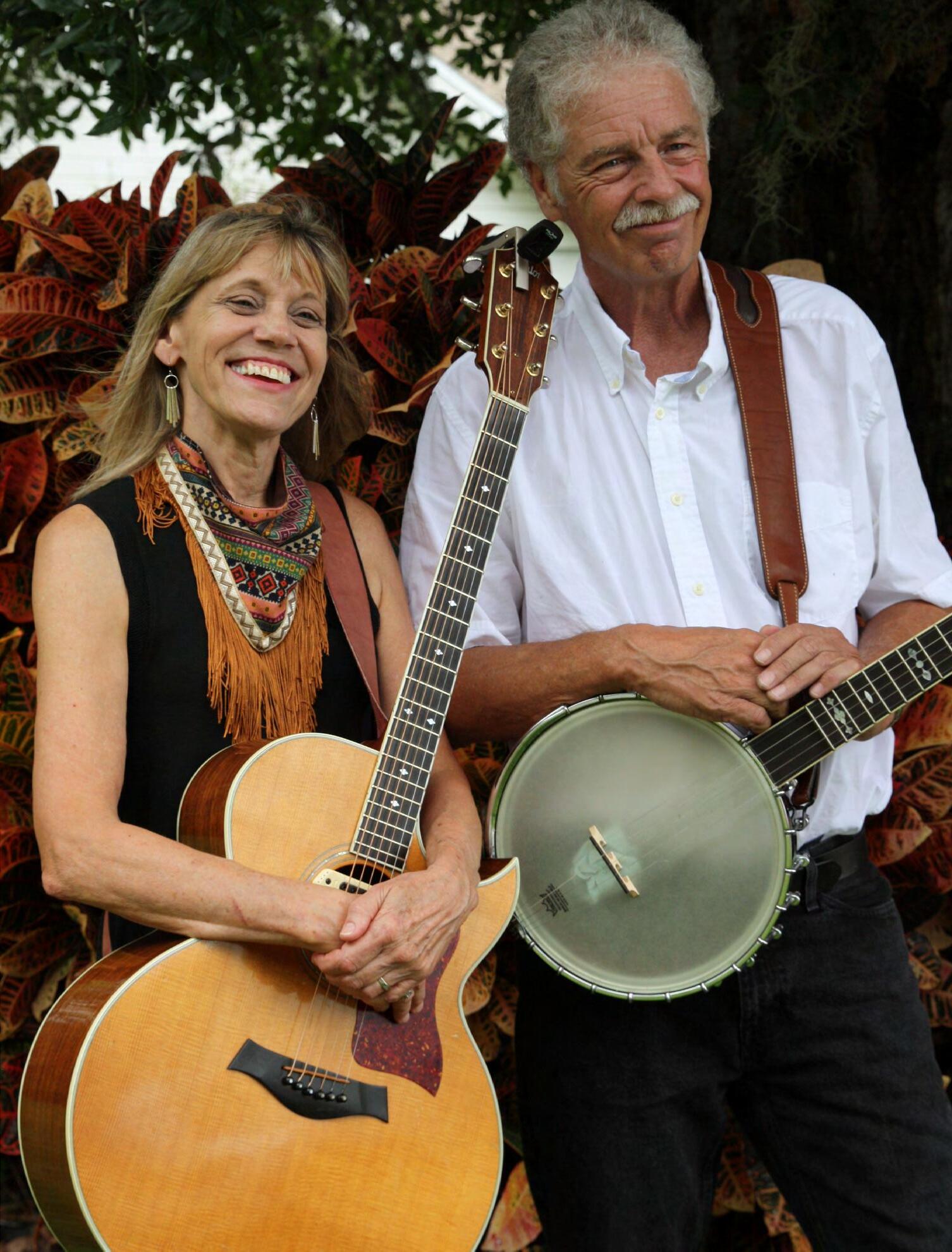
25
spawned from our OB-3 Twanger, a pre-war style resonator banjo that is a replica of J.D. Crowe’s original RB-3 Banger. It’s something really unique for the modern banjo player.”

The company caters to those who play traditional bluegrass and folkstyle instruments, as well as those who are into what Wayne calls “Folkternative” instruments, many of which are hybrids that combine instruments, including a mandolin-guitar,

mandolin-cello, a dojo (fivestring dobro style), banjo-bass, resonator bass and more. “They are interesting, real instruments for real musicians,” says Justin. Traditional instruments are still as popular as ever. “Within the last four to five years, with the release of our OB-3 Twanger banjo, we have taken a step into a higher league of players. And now there’s the OB-2 Bowtie, both of which are under the Mastertone name. We are finding ourselves in a new
ballgame for expectations of what our instruments can do.”
One of the things Justin likes most about the company is that it is a local, family-based company. “We have a cool dynamic here. We are all really easygoing. Our customers enjoy the fact that we are personable and open to hearing new ideas. And when you call our company, we actually answer the phone.”
26
Justin says many of their clients come directly to the store. “When they get here, they are blown away by the number of instruments we have here.” The company is located near the Kennedy Space Center and Orlando, a perfect location for shipping instruments across the country or around the world.
There are other related companies under the Gold Tone umbrella. Earth Tone is the manufacturer of real calf skin drumheads. Woodsong is Gold Tone’s acoustic guitar line. Zero Glide is a patented nut for any stringed instrument. Gold Tone is the distributor for Jose Jimenez classic guitars, another family company located in Madrid. And Loop-2-Learn is a

smartphone app that makes learning new songs easier by allowing the user to loop a portion of any YouTube video or video from their camera roll. “It was built with the intention of learning songs,” Justin says. “It takes the start and end parameters and loops them. Users can even adjust the speed while retaining the pitch.”

27
The Mountain Grass Unit
The Mountain Grass Unit is on the move. Composed of a trio of college students, they’re eager and interprets other genres – ranging from bluegrass to rock to jazz – in a way that feels fresh from Birmingham, Ala. might have tapped into the same zeitgeist.
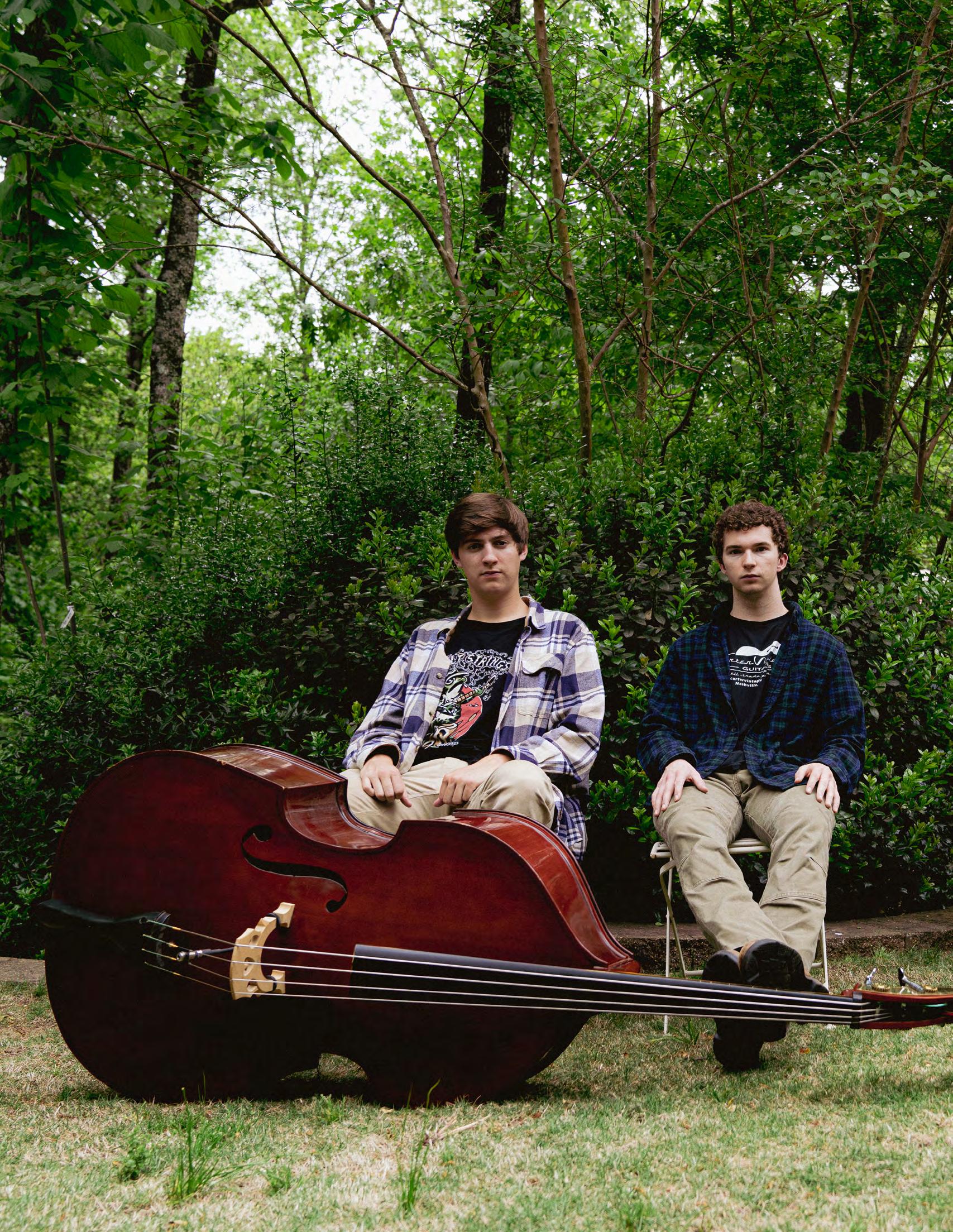
Founded in 2019, the bandmates had been part of a more “electric” band. Drury Anderson reached the point where they were really enjoying it. They just needed a bass line to make
“They reached out to me,” explained bass player Sam Wilson. They asked if he wanted to start borrow it until I got my own.”
The Mountain Grass Unit was a natural fit. The new trio consisted of Anderson, on mandolin bass. The three had been friends since they were little kids and grew up living no more than Boston, where they’re in their junior year of studying at Berklee College of Music. Wilson This summer, they toured widely during summer break, gigging in states as far away as Nebraska, base and went from only doing private functions to being booked at big events across the U.S.
28
Mountain Unit
eager to deliver their own interpretation of bluegrass. It’s acoustic music that often relays fresh and young. They say it’s similar, perhaps, to what Billy Strings does; these young guys
Anderson had been doing some unplugged music on the side with bandmate Luke Black, and it it whole.
start jamming as a trio in ways more acoustic. “A family friend had an upright and let me
mandolin and vocals; Black, with acoustic guitar and banjo; and Wilson, with his new upright than five minutes from each other. Today, Anderson and Black spend part of the year in stayed closer to home and studied at the University of Alabama. Nebraska, Colorado, and Oregon. They are surprised by how quickly they developed a fan U.S.
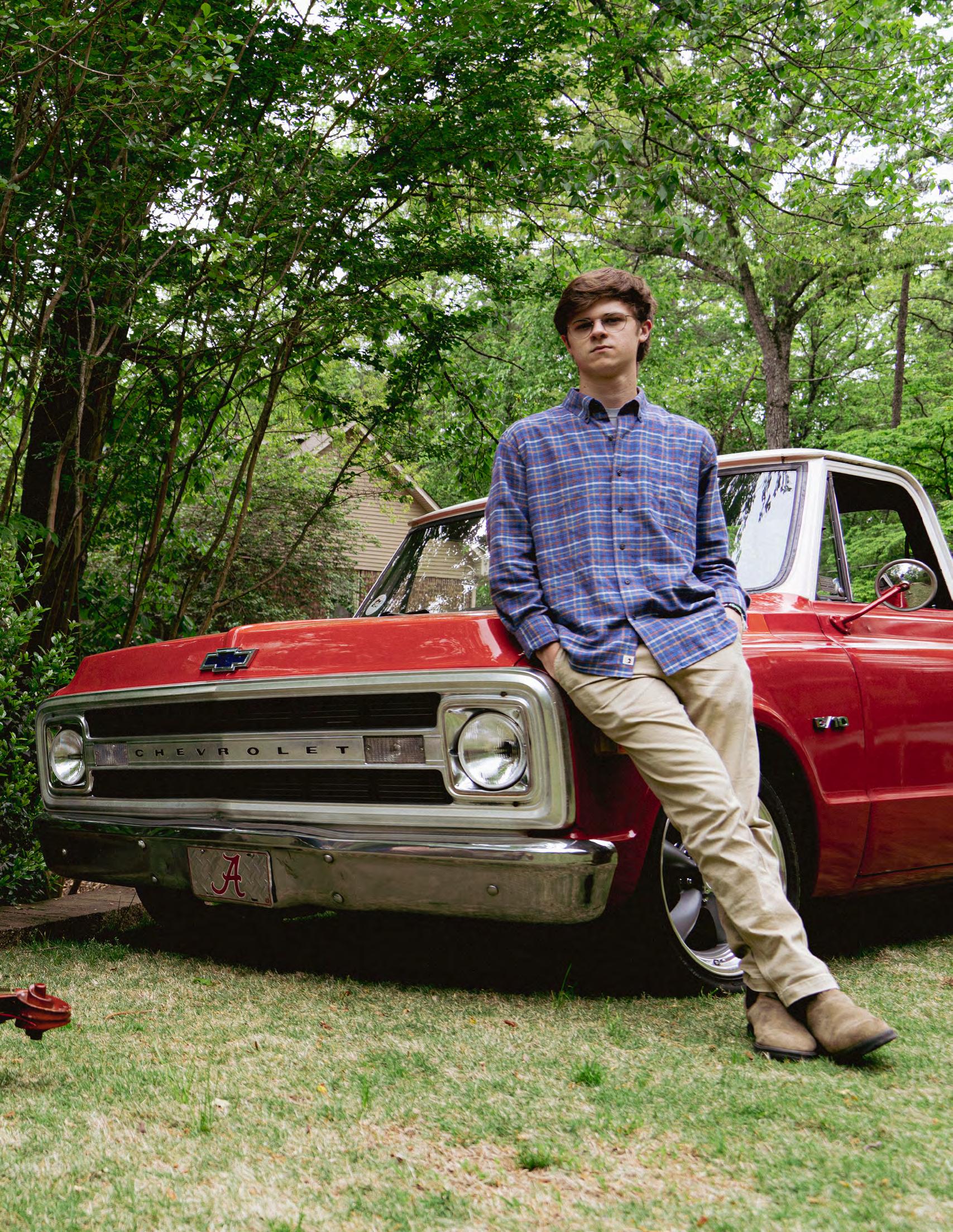
29
Kara Martinez Bachman
“We started out doing every 50th birthday party under the sun,” Wilson joked about their early bookings. Then, something kinda cool happened that they describe as a turning point in their trajectory; they were asked to open for Sam Bush. It got them “fired up.”
In yet another windfall of fortune, in-demand session musician Scott Vestal asked if he could play with the guys. With a list of people he’s performed with that includes names such as Bill Monroe, Dolly Parton, Ricky Skaggs and even David Lee Roth, having the Mountain Grass Unit added to the list no doubt boosted the feeling that they were onto something good.
Vestal invited the trio to his home studio in Tennessee, where they created the band’s first record, titled Places I’ve Been.

“It’s all originals,” Anderson explained. “It’s an 8-track album, released last July.”
“Places I’ve Been…” Wilson mused, “...the lyrics…some of it is storytelling. About places we’ve been physically and mentally.”
The band’s website describes it as a record that “underlines the ideas of bluegrass, jam band, jazz, metal, and funk into one piece of work.”
30
According to Black, the local music scene influenced their style.
“A lot of jam bands come out of Birmingham,” he said.
Black credited Birmingham-area musician Allen Tolbert as a mentor who “taught me how to play everything.” He said Tolbert introduced them to the history and culture of music and modeled a style that, according to Tolbert’s website, combines elements of Tony Rice or Alison Krauss sounds with music as far-reaching as John Coltrane or Miles Davis. It was something to emulate and learn from.
Anderson described what The Mountain Grass Unit does in just a few words: “Hard driving jam grass. Very intense and very experimental.”
For a trio of young college guys, they’re sitting in a pretty good place right now with their tastes in music. The time is nigh.
“Billy Strings is popping off right now,” Anderson said. “Now, it’s the perfect time. Bluegrass is getting cool again.”
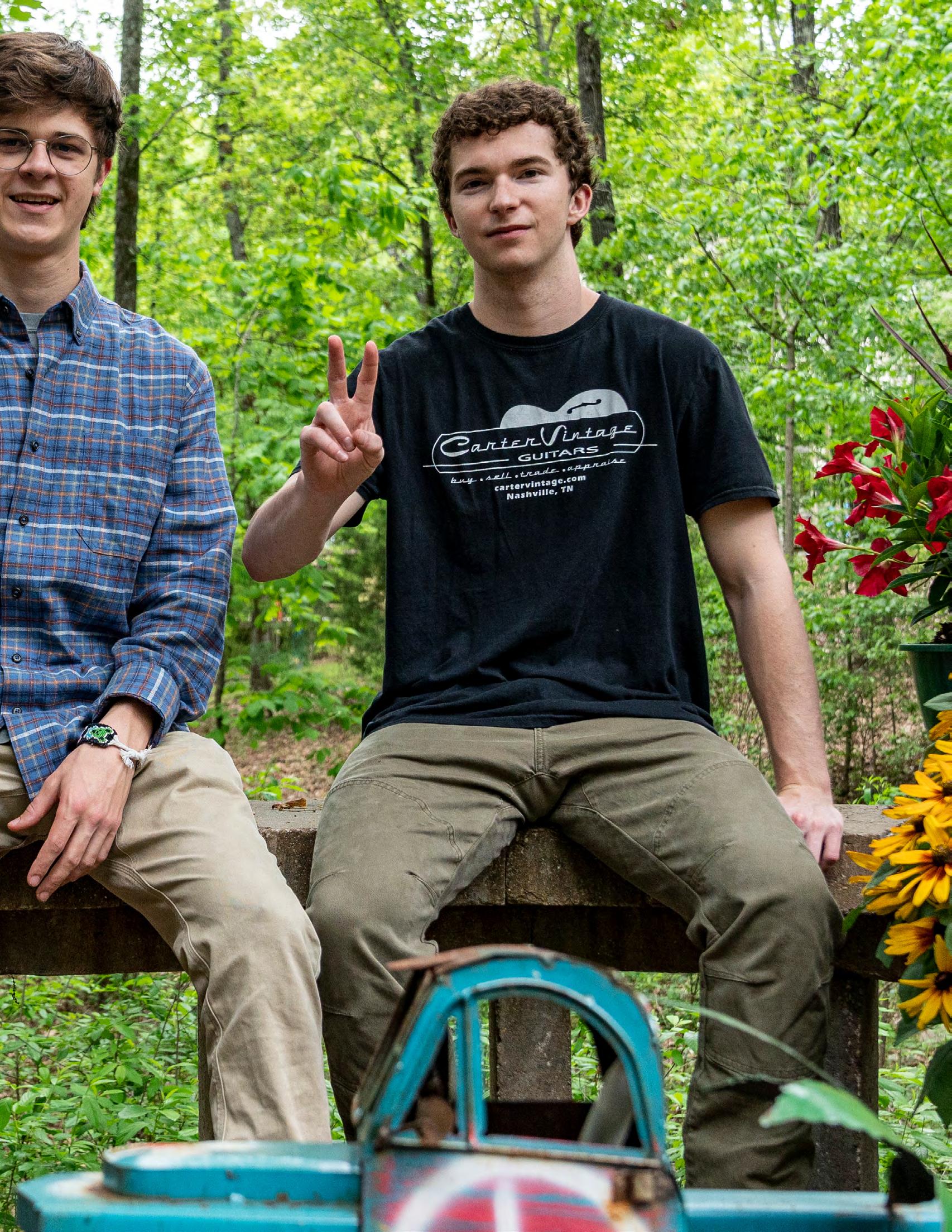
31 Brent Da vis


32


33
The Sweet

34
Sweet Lillies

35
Susan Marquez
When Becca Bisque and Julie Gussaroff met at a music party in Colorado, it was the beginning of what is now a powerhouse string band. “Becca was looking to work with someone who was more expansive and creative,” says Julie. “She had just started writing songs. I was doing singer-songwriter stuff, and she accompanied me on viola.” The two thought it would be cool to have a band. “Finding that kind of musical connection isn’t easy to do. We began using our skills to write and grow together.”


And have they ever grown! The Sweet Lillies were founded officially six years ago when Dustin Rohleder joined the group. The band is now comprised of Julie on bass, Becca on vocals, Dustin on guitar, and the band’s newest addition, Jones Maynard, on percussion. “The band Jones was playing with fell apart during Covid, and we were looking for a drummer, so it worked out great for all of us,” says Julie. “Jones is a talented, young and hungry drummer from Atlanta, and we have really enjoyed having him on board.”
Luckily, The Sweet Lillies persevered through the Covid pandemic, despite Julie falling ill with the virus early on. “We opened for Sam Bush at the Gothic Theatre. I’ll never forget we played ‘Insane in the Membrane,’ and it was really cool. Then I went down the next day and was sick for the next couple of months with Covid.” Julie was very sick, and her bandmates came in to take care of her. Within weeks gigs began canceling due to the pandemic, which worked out
well for The Sweet Lillies, as Julie was too ill to tour. “But we kept rehearsing,” she said. “I would stand up with my bass and rehearse, then go right back to bed. I think we came back stronger because of it.” The Sweet Lillies put out regular videos on YouTube during the pandemic. “That kept us going,” says Julie. She also credits their manager, Erwin Schemankewitz. “He stood by us during the entire pandemic. He was so loyal – he held space for us and just held us. We were without work, but so was he. We truly trust each other, and that relationship will last the rest of our lives.”
Becca and Julie came up with the name of the band. “The Sweet Lillies reflects that the band is driven by women,” explains Julie. “We wanted to convey color and beauty, and the fact that two women started and created this project. We asked the men in the band if they are uncomfortable with the name, and they said, ‘Not at all.’ We believe the name is authentic and easy to remember. Plus, it looks lovely on a poster.”
Songs by The Sweet Lillies convey the world around them. “The world is a crazy place,” muses Julie. “It seems things are coming to a head.” The band members come from very diverse backgrounds. “I grew up in New York in middle-income housing in Chelsea (before it was gentrified), and my parents were both social justice activists. Dustin grew up on a generational walnut farm. He was the first in his family to leave the farm to pursue his own path. That’s where the song ‘18
36

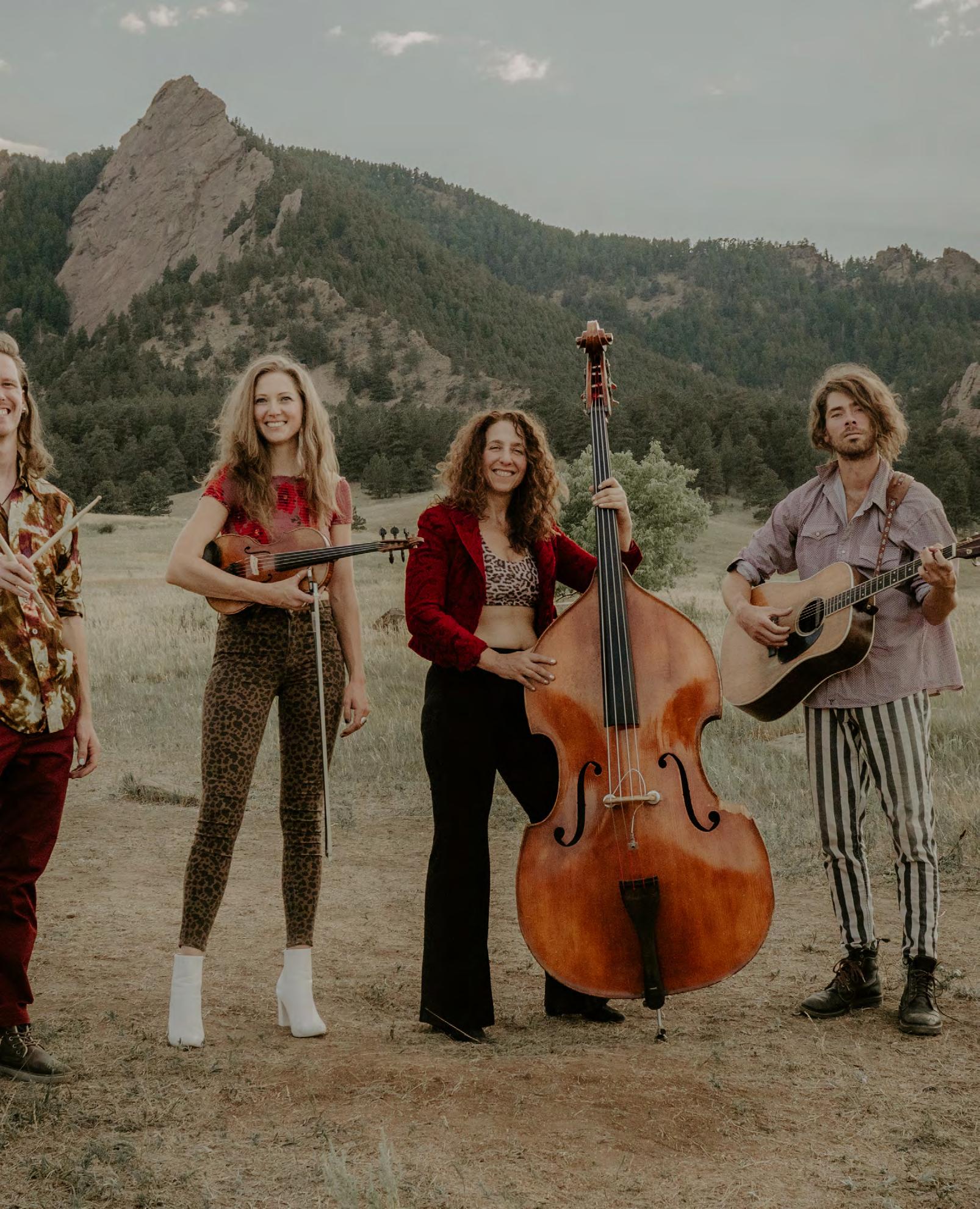
37
Wheels’ comes from.”
That single was released in the spring and uses a tractor/trailer driver as a metaphor to tell the story of a man’s journey as a lone wolf in search of his own life. The animated music video of the song features a man walking through a fantastic fantasy world as he searches for what life has to offer.
The song is one of twelve songs on their latest album, Equality, released June 2. The album, produced by Chris Pandolfi of the Infamous Stringdusters, has a strong social justice slant. “We believe all people deserve the same treatment and rights,” Julie says. “There is a direct relationship from childhood to the world around me. As a child, I walked out my front door to see homeless people suffering. That left a strong mark.” Chris contributed to the album as well.

Like most bands, The Sweet Lillies have evolved over the years. “We went from being a noon set on a Sunday kind of band to a late-night set on Saturday band. We are more of a ragey, party, fun band, and we are an original band, as we do primarily original music. We love the music culture in Colorado, with bands like Leftover Salmon. We have had the opportunity to play with so many great artists, and we love the collaborative nature of the music here.” Julie says in the beginning, they were all strong songwriters with a folk music slant. “We always brought in artists as well, as we had a banjo on just about every song. As we have evolved, we are leaning toward a more heavy-hitting drum sound. And Becca is a powerful rapper with a strong ability to combine spoken word with music. There are actually three rap songs on our new album.”
Julie says the band is in the process of writing songs for their fifth album. “We are a fulltime four-piece band now.” Keep an eye out for The Sweet Lillies. They are making a strong mark in the music world.
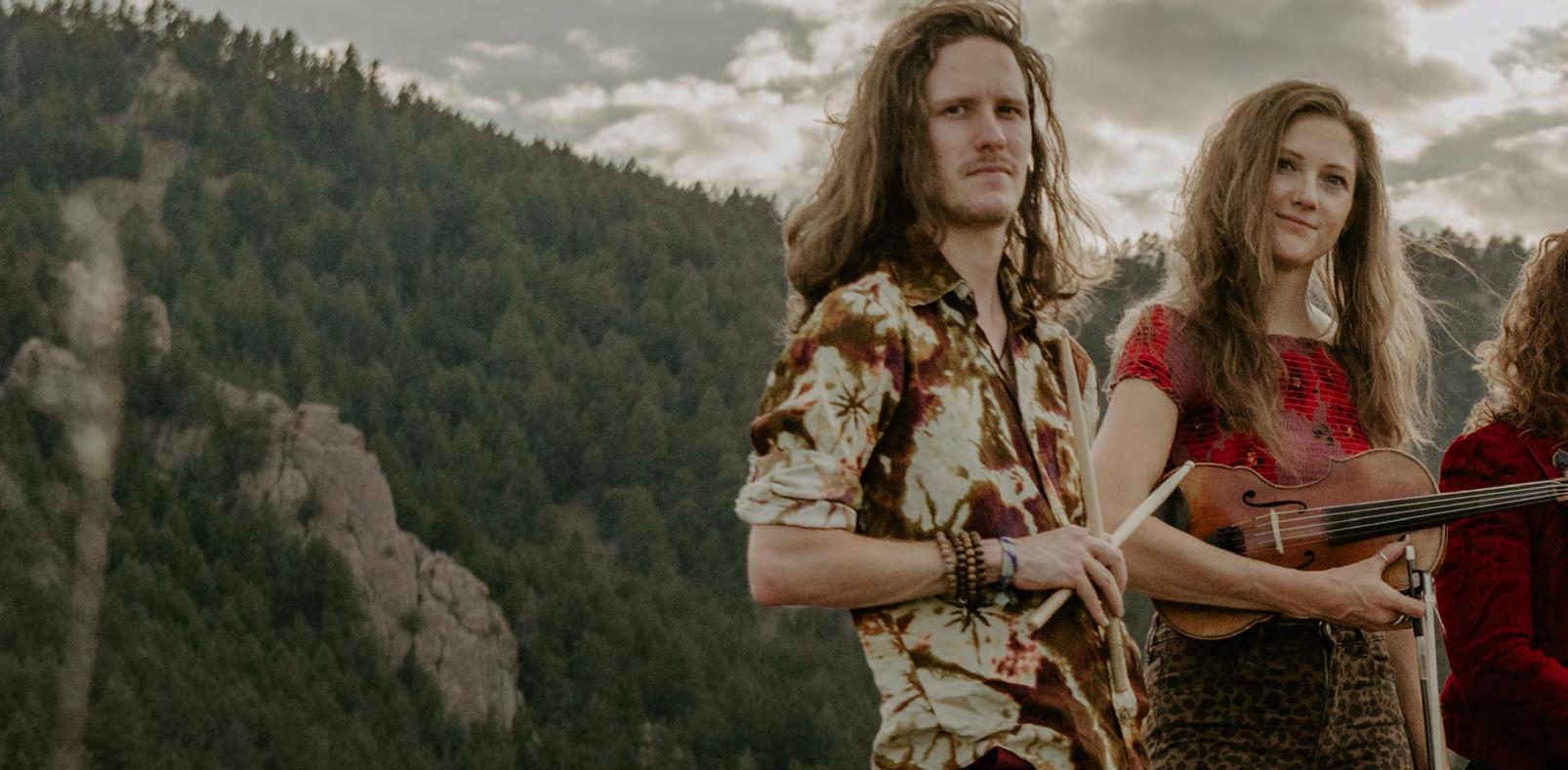
38


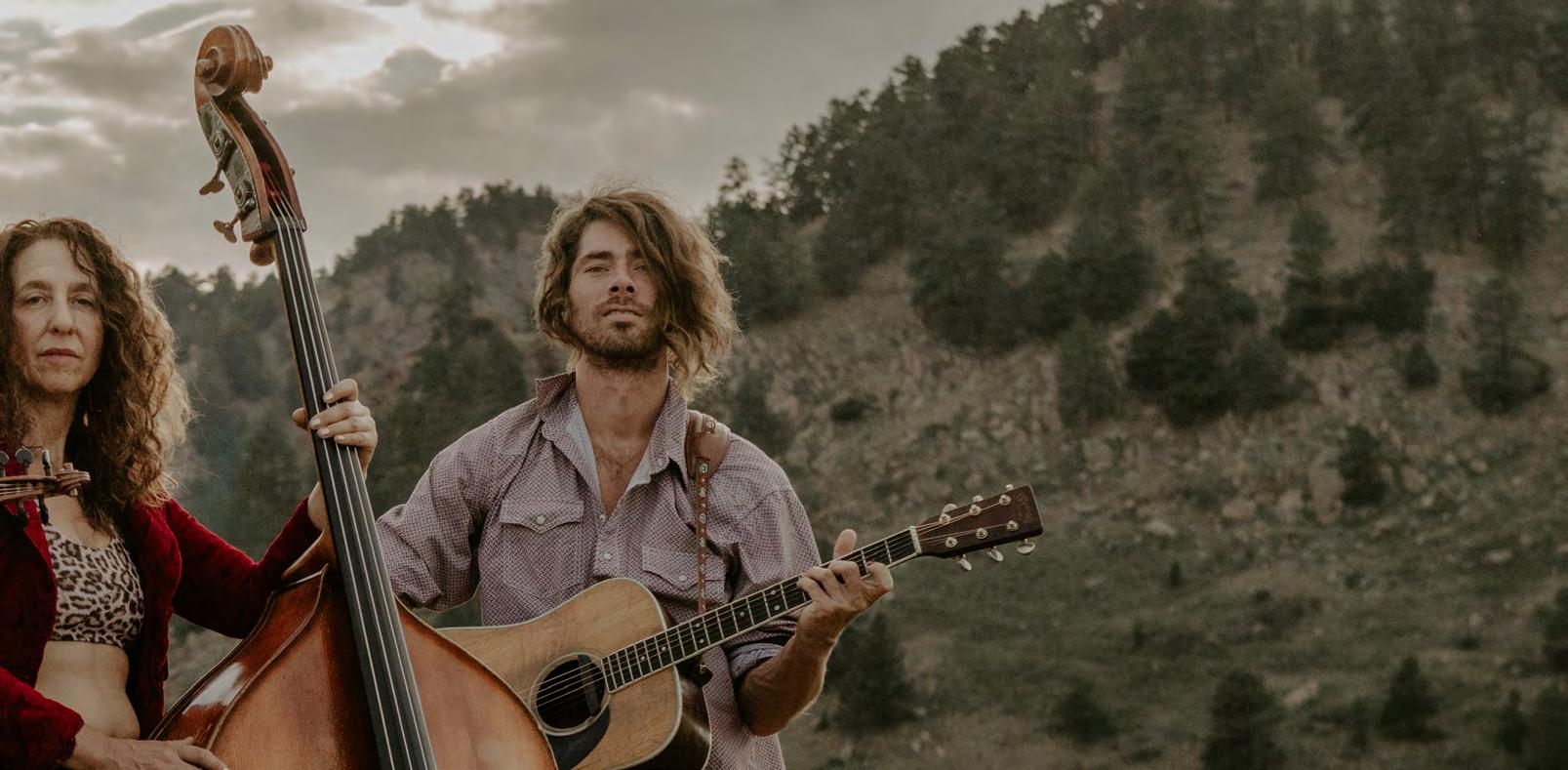
39
Jackson Hollow
Mike Sanyshyn and Tianna Lefebvre both grew up surrounded by music. Tianna actually had her first recording session when she was just fifteen years old. “We both entered contests, and Mike found a photograph of me singing on stage and him playing the fiddle, but we didn’t meet for another couple of years after that when we were both twenty-one.” The two hit it off, and they have been together ever since. Mike and Tianna are married, and together they are half of Jackson Hollow, an award-winning bluegrass and country band based in Vancouver, British Columbia.
The other two members of Jackson Hollow are Charlie Frie and Eric Reed. The band’s tagline is “Bluegrass and Country – Living in Harmony.” And that pretty much describes the music they play. “I was always exposed to bluegrass,” says Mike, who played traditional fiddle tunes. “I used to enter old-time fiddle competitions.” The bluegrass bug bit in 2011 when they attended Wintergrass in Bellevue, Washington. It was at that festival that both fell hard for bluegrass. “We loved how authentic it was,” he says. “And the people were all so nice.” Hearing Rhonda Vincent was the turning point. “It felt like home for us,” Tianna says. Jackson Hollow was formed in 2015. It took a while to find their footing as a bluegrass band. “We played in a lot of jams with friends, and we tried a few other musicians until we found people we want to spend time with,” says Mike. “Being on the road can be stressful. You have to find people you have good chemistry with, and Charlie and Eric are a lot of fun.” The band is driven by Tianna’s powerhouse vocals. She is the winner of the British Columbia Country Music Association’s (BCCMA) Female Vocalist of the Year Award and the Horizon Award. Her career has seen her performing with stellar artists, including Shania Twain, Michelle Wright, and Russel DeCarle.
Mike has plenty of recognition as well. He is an award-winning fiddler who has won Provincial Fiddle Champion titles, and he has placed in the top three at the Canadian Grand Masters Fiddle Championship. He has also been named the Canadian Country Music Association (CCMA) and BCCMA Fiddle Player of the Year, and he has played with Ian Tyson, Lucille Starr, The Good Brothers, Randy Bachman, and the Grammy-nominated artist Deric Ruttan. He plays mandolin and provides harmony vocals to the group as well. The other two members of the band have plenty of accolades in their own right. Upright bass player Charlie Frie is also a talented vocalist. He has been recognized by BCCMA with a Mike Norman All-Star Band Award for bass. Eric Reed is on guitar, and Juno, a nominee and Canadian Folk Music Award winner is on banjo. He is also a talented producer and recording engineer. Mike and Tianna went to IBMA in Raleigh for the first time in 2018. “We had never been, and we were on our own,” recalls Tianna. “We didn’t know anybody there.” They went to see Ricky Skaggs get inducted that weekend and had the opportunity to
40
Susan Marquez

41

42

43
meet him at a pre-show event. “It will be fun to go back now that we have a history.” It’s no wonder that in their short time as a band, Jackson Hollow has received the BCCMA Gaylord Traditional Country Award four times. Even the band’s publicist, Jasper Anson, received the President’s Citation Award from BCCMA.
The band’s debut album on Mountain Fever Records is Roses, released on March 10. The title track comes from a song that Melba Montgomery’s son-in-law, Shane Barrett, pitched to them. The song runs four minutes and 29 seconds, longer than most songs on the radio, but they believed in the song so much they put it on their album. In addition to Melba and Shane, the album features eighteen other notable songwriters, past and present, including Jerry Salley, Carl Jackson, and Leslie Satcher, along with Canadians Patricia Conroy, Doug Folkins, Duane Steele, Jackson Matthews, and Maddison Krebs.

44
Roses is a bluegrass album with Americana and traditional country influences. “We wanted to create a collection of music that is more timeless than commercial,” says Tianna. “Everything from the choice of songs on Roses to the instruments reflects a classic sound, but with the advantages of modern recording.”
There’s an emotional connection to the songs on the album, which Mike says, is “a love letter to the music that grabs us as artists. Roses showcases the bluegrass genre to those waiting to discover it while respecting the pioneers who started it.”

45
Lebron Batey
As a child growing up in Alabama, Lebron Batey was surrounded by music. “My mom was in a Gospel group, and I traveled with them as a young child. My dad’s side of the family all played an instrument. Our family reunions were filled with people picking.” Lebron says he always played one instrument or another, but it was when he met Gene Ivey that he became interested in actually making one.

“Gene was a ‘shade tree luthier,’” says Lebron. “He classes on fiddle making. “He needed another student, and he asked if I’d like to learn to make a fiddle.” Lebron jumped at the chance, thinking it would be a one-time deal for him. He began a nine-month apprenticeship, and Lebron ended up building his first two fiddles and a mandolin in Gene’s shop. “It hit with me,” he says. “I love what I did with the first one, and Gene told me that I’d always remember it. He said it was like eating potato chips – you can’t stop with just one.”
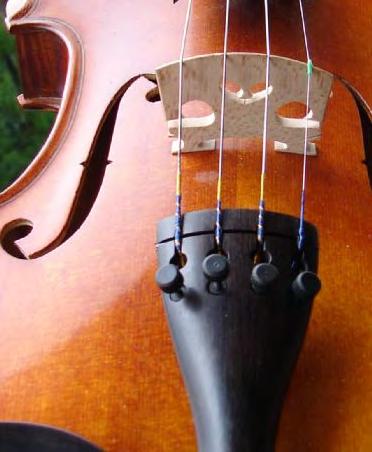
That was in 1987, and Lebron says he was working the second shift at the time. “I had a young family too, so I didn’t have much time to devote to building fiddles.” But Gene had been right, and Lebron wanted to continue making fiddles. He set up shop in a 12’ x 24’ metal building at his home in Sylvania, Alabama, where he made fiddles for 18 years. Lebron says he has recently added a new 16’ x 40’ building. “I needed more space.”
Building a fiddle requires knowledge, skill, and intuition. It takes Lebron roughly 150 to 175 hours to do the woodwork on a fiddle. He begins with air-dried wood, most of it ten years or older. “I use curly maple and spruce. There are five or six different species of spruce people use to get the tone they desire. I use either Ingleman or Adirondack Ridge spruce, which only grows in Canada or Washington State. It’s hard to find.” Lebron explains that the quality of wood is graded on clearness and grain. “A quality instrument is only as good as the wood from which it’s made.” It’s hard to find a good selection of wood.” Lebron says he finds wood by
46
Susan Marquez
contacting other makers, and once he got Ingleman spruce from the man who actually cut down the tree.”
Once the wood is sourced, Lebron says he has to book-match the wood by cutting it in half and laying it side by side. “Occasionally, I’ll get a piece that I can use to make a solid back fiddle, but that is rare.” Everything on the fiddle is handmade. “I use ebony, rosewood or boxwood for the fingerboard.”
Lebron uses a mold from his favorite violinmakers for the inner core shape of the violin. “I like the 1737 Guarnerius mold the most,” he says, “but I altered it some to make my own pattern. I opened the length up a bit, and I made my pattern out of aluminum instead of wood.”
Along the way, Lebron has learned that having the right tools makes all the difference. “I know that having the right gouges and other tools will make my job easier in the long run.” The wood has to be cut a certain way. “All the tone comes from the graduation or the thickness of the wood. I know it may sound strange, but I let the wood talk to me. I can tell by the way my knife cuts it what it will sound like. If the wood is really hard, I can go a little thinner. If the wood is more spongey, I leave it a little thicker. It’s an intuitive thing – it has to feel good to me. I listen to how it sounds then I make a judgment call.”

To date, Lebron has produced 126 fiddles in what little spare time he has. He has worked for 36 years for the Mueller Company in Chattanooga. “I travel 124 miles each day round trip,” he says. Then he spends time in his shop. “I didn’t intend to do repair work, but two or three stores in Chattanooga send their repair work to me, as well as a shop in Ft. Payne, Alabama.”

Doyle Lawson bought one of the first fiddles Lebron sold. “I had a booth at a show in Cullman, Alabama, and Doyle came by and bought one. He still owns it.” As a matter of fact, Lebron kept up with who bought the first 15 or so fiddles he made. “I had a logbook where I kept up with who bought each fiddle, what it was made of, and how much I sold it for.”
That changed when two friends of Lebron’s who work at Gibson in Nashville opened the doors for him to sell his fiddles there. “Danny Roberts and Jackie Miller said the store wanted handcrafted fiddles to sell. I didn’t think mine would be good enough to sell there, but for the next four years, they took every fiddle I made. Gibson did a good
47
job of promoting me and getting my name out.”
Like most businesses, Covid made it hard on Lebron. But he persevered. While he doesn’t play fiddle professionally, he does play at his church on Sundays. At one time, he played in a band, but working full time, commuting, making fiddles and coaching his son’s baseball team took up all of his time. “I’m not the best player, but I can do sweet backup.”

One of the most interesting fiddles Lebron has made is a five-string. “The first one I ever made is currently on the market. I bought the neck with a head carved on the top from China. Since then, I have built four more five-string fiddles, and I did my own carving on those.”
Lebron owns three of the fiddles he has made. “I’m getting ready to start two new ones. That’s always exciting. It makes me work a little longer in the shop. As a fiddle takes shape, it gets more interesting.”
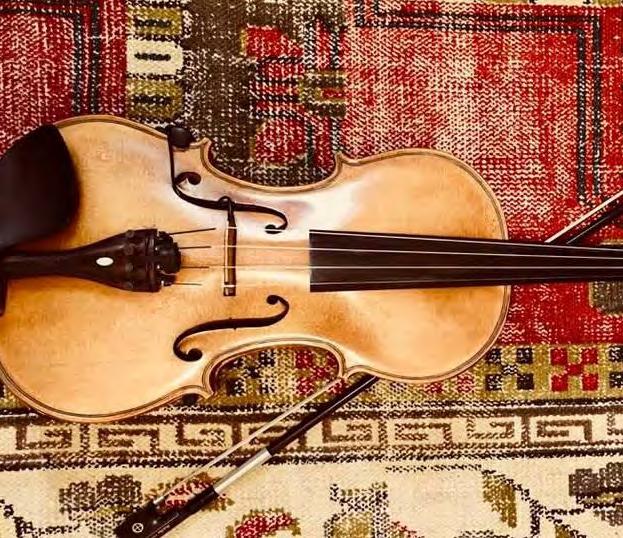
48

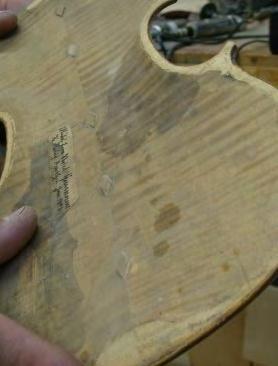
49
D’Addario, known for its superior musical strings, has a reputation that dates back literally hundreds of years to a different continent. “The D’Addario roots have been traced as far back as the 1600s in Italy, where family manufactured strings,” says Brian Vance, VP of fretted strings and accessories for D’Addario.
D’Addario was founded in 1974 by brothers Jim and John D’Addario in Long Island, New York. “Their grandfather, Charles D’Addario, migrated to the United States in 1905,” says Brian. “He came through Ellis Island and imported strings from Italy and eventually started making strings in New York.” What started as a small family business nearly fifty years ago is now the largest musical instrument accessories manufacturer in the world. It is still a family business, with Jim D’Addario as the lead in product innovation, John D’Addario III serving as CEO, Michael D’Addario overseeing global operations, and John and Michael’s sister, Suzanne D’Addario, who is responsible for the D’Addario Foundation.
The company’s mission, clearly published on its website, is to create a digitally inspired global culture that continues to elevate what they make, how they work and foster relationships that consumers, retailers, suppliers, and employees covet. Add to that the vision to be one of the most admired and inspiring global companies through their passion for innovation and spirit of responsibility, and you can get a sense of the kind of company D’Addario strives to be every day.

The vision and mission of D’Addario come down to five key values, explains Brian. “The five values are curiosity, passion, candor, family and responsibility. A lot of thought and work went into those words, and it is something the company really honors.” Brian says that Jim is a curious person by nature, and that led to everything from science, technology, and mechanics to the supply chain affecting how things are done at the company. “That approach has carried down to printing our own packaging, designing and manufacturing our own machinery, and drawing our own wire as a way to control quality.”
D’ADDARIO

50
Susan Marquez
D’ADDARIO

51
The company’s key initiatives speak to its philosophy. Playback is D’Addario’s string recycling program. “We are trying to work with our customers to recycle their old strings when they buy new ones.” By signing up for a Players Circle account on the D’Addario website, strings can be shipped directly to the company or dropped off at local string recycling centers.

Another initiative is centered around the company’s ProMark Drumsticks. Play.Plant. Preserve is a landmark reforestation project where tree seeds are planted for each pair of drumsticks sold. Approximately 85,000 trees are planted annually.
Finally, the D’Addario Foundation works to champion positive change in the world through music. “We work to get instruments and accessories into the hands of children and provide a musical education for them, which is often life-changing for some,” says Brian. Over the years, D’Addario has acquired other brands, including ProMark drumsticks and EVANS Drumheads. Rico Reeds, D’Addario Orchestral Strings and Puresound Snare Wire rounds out the company’s offerings.
While all genres of musicians use the company’s products, Brian says that bluegrass and Americana are important components of D’Addario’s business. “That community is extremely loyal and supportive.” Brian was widely exposed to bluegrass and acoustic roots music when he first started with D’Addario 22 years ago. “I went to many of the major festivals, including Gray Fox, MerleFest and IBMA. I fell in love with the music and with the artists. Now we send new employees to those same festivals, and it’s rewarding to see them fall in love with it, too.”
D’Addario’s artist roster is impressive, with musicians from all genres from around the globe. “We make a great product that works for them,” says Brian. “The product keeps them loyal, and they are appreciative of the brand and what we do for the community. We co-market with them and support them at places like IBMA.”
Guitar companies are also partners with D’Addario, including Collings, Bourgeois, Larivee, Beard and many more, including most recently, Taylor Guitars. “Taylor has recently partnered with us,” says Brian. “They are now using our premium XS coat Phosphor Bronze guitar strings exclusively on their guitars.”
Brian says that he believes music is both important and influential. “It is important for our future to help sustain it and help it grow. We believe in the power of music. It makes us proud to work for a company that gives back so much.”
52




53
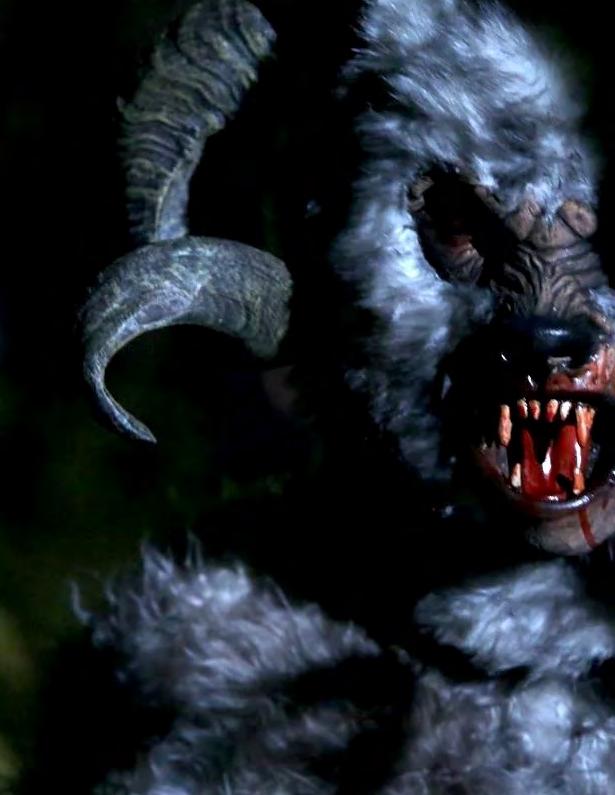
54
Storytelling in the Mountains: Cryptids Create Curious Tales

Appalachian culture relies heavily on storytelling and sharing stories through oral traditions. Much like bluegrass music, those stories may intend to teach life lessons or explain why things happen or just provide some entertainment.
The latter is the case when it comes to characters like Mothman, Flatwoods Monster and Sasquatch. These cryptids find their homes in Appalachia, and their origin stories and reported sightings are shared around campfires, at sleepovers and more as a fun way to pass the time.
Appalachia has gained a reputation for its cryptids due to a combination of not only those rich folklore traditions but also its dense forests, rugged terrain, and the history of isolated communities. These elements have contributed to the development of legends and stories surrounding mysterious creatures in the region.
Here are some of those key cryptids that star in stories:
Mothman: Likely the most famous cryptid associated with Appalachia, Mothman gained widespread attention in the 1960s in Point Pleasant, West Virginia. Described as a large humanoid creature with wings and glowing red eyes, Mothman was reportedly seen by multiple witnesses before the tragic collapse of the Silver Bridge. Some say Mothman was created as a mutant from the nearby TNT factory, and the appearance was a warning of the impending disaster. The legend of Mothman has since captured the imaginations of many and has become a popular subject in books, movies, and even restaurants - which have created menu items in the likeness of Mothman into ice cream sundaes, burritos, and pizza. Mothman has become a beloved symbol of local folklore.
The Appalachianile Bigfoot - or Sasquatch - sightings are reported across various regions, the Appalachian Mountains are also said to be home to this elusive creature. Bigfoot is described as a large, hairy humanoid that roams the dense forests of the Appalachians. Bigfoot has ample hiding spaces in Appalachia’s vast, remote regions, which helps to avoid human detection. Appalachian communities have embraced the legend of Bigfoot, and it has become an integral part of the region’s folklore and cultural fabric. Bigfoot festivals and events draw interested folks.
Flatwoods Monster: The Flatwoods Monster, also known as the Braxton County Monster, is a cryptid
55
Candace Nelson
associated with an alleged encounter that occurred in Flatwoods, West Virginia, in 1952. People described seeing a creature as tall with a red, glowing face and large, non-human eyes. Its body was described as either metallic or covered in shiny, metallic-like armor and a pungent odor emitting from the creature. The Flatwoods Monster has since become an iconic figure in Appalachian folklore and has been commemorated with a local museum and an annual festival.

The Wampus Beast: This creature is part of Appalachian folklore, particularly in the regions of Kentucky and Tennessee. It is often described as a half-woman, half-cat or half-dog creature who lets out eerie screams and has glowing eyes. The Wampus Beast is said to be a shape-shifting creature that lurks in the forests, and its sightings might bring bad luck or foretell an impending tragedy - similar to that of Mothman.
The Snallygaster: Found in Maryland and surrounding areas of Appalachia, the Snallygaster is a creature that resembles a half-bird, half-reptile monster. It has wings, a beak lined with sharp teeth, and tentacles or octopus-like appendages. The Snallygaster is said to terrorize the countryside, preying on livestock and even attacking humans by silently swooping from the sky to pick up and carry off its victims.
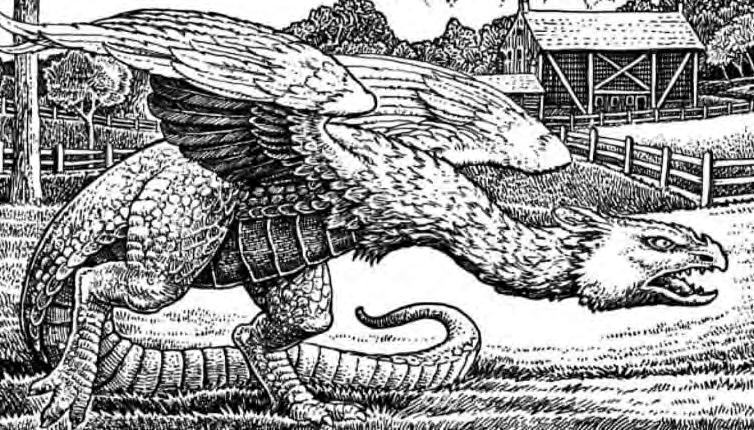
Sheepsquatch: This creature is a regional legend in West Virginia, Virginia, and Kentucky. It is described as a creature standing up on its two back legs, resembling a mix between a sheep and a bear, with long, shaggy white fur, sharp teeth, and glowing red eyes. Sightings of Sheepsquatch have been reported since the 1990s and its origin and nature remain shrouded in mystery. The wooly-haired creature is sometimes referred to as “The White Thing.”
These are just a handful of the cryptids in Appalachia. And there are even more cryptids beyond the Appalachian region, such as the Loch Ness Monster in the Scottish Highlands and the Yeti in the Himalayan Mountain range in Asia. Many cultures have their own versions of monsters.
Appalachia has a rich heritage of folklore and oral traditions passed down through generations. Stories of
56
strange encounters, mythical creatures, and unexplained phenomena have become deeply ingrained in the culture. Cryptids are often intertwined with these stories, becoming part of the collective imagination and contributing to the lore of Appalachia.


The above cryptids, among others, add to the folklore and mystique of the Appalachian region. While the existence of these creatures is debated, their legends continue to be passed down through generations, adding to the rich tapestry of Appalachian folklore.

57
FAN PHOTOS
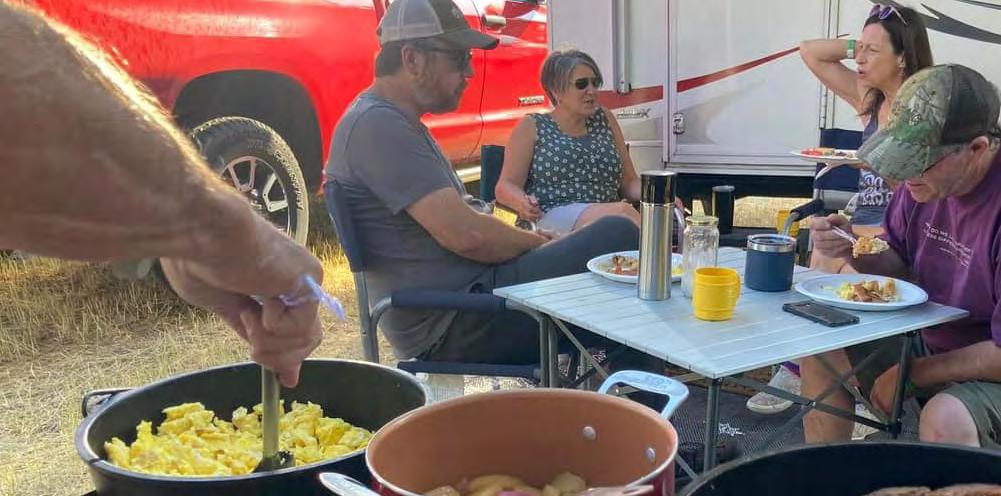
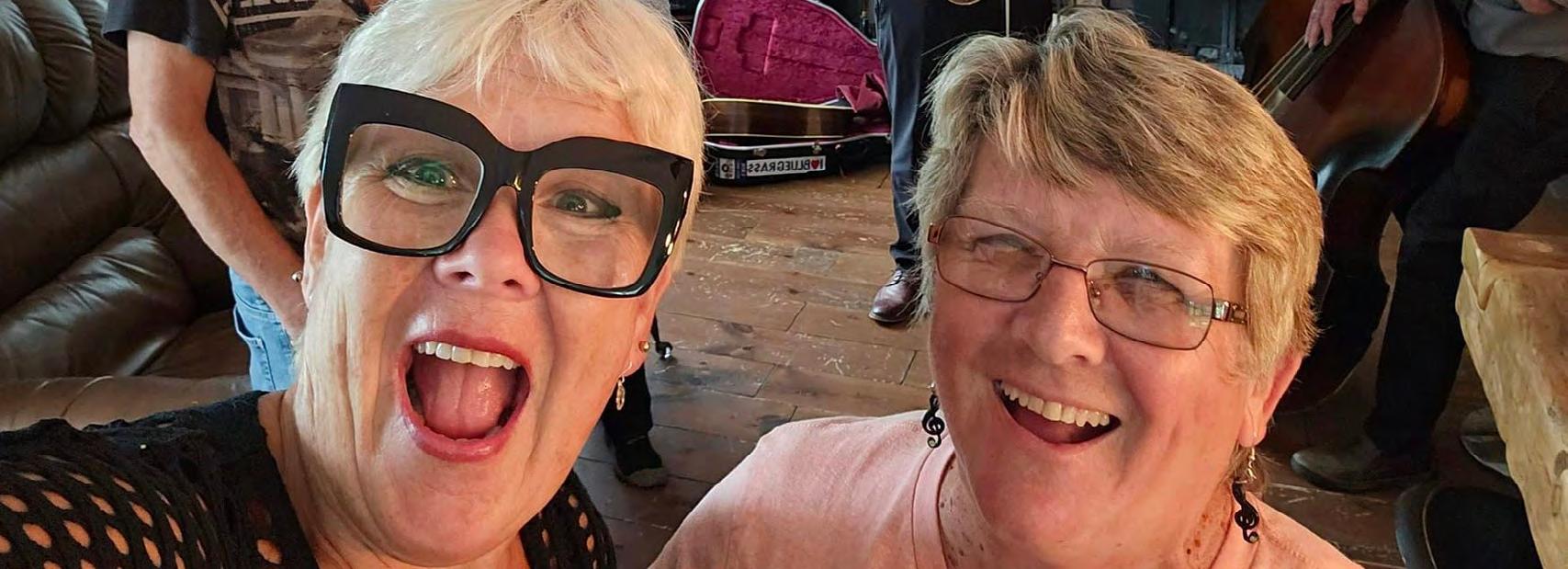






58

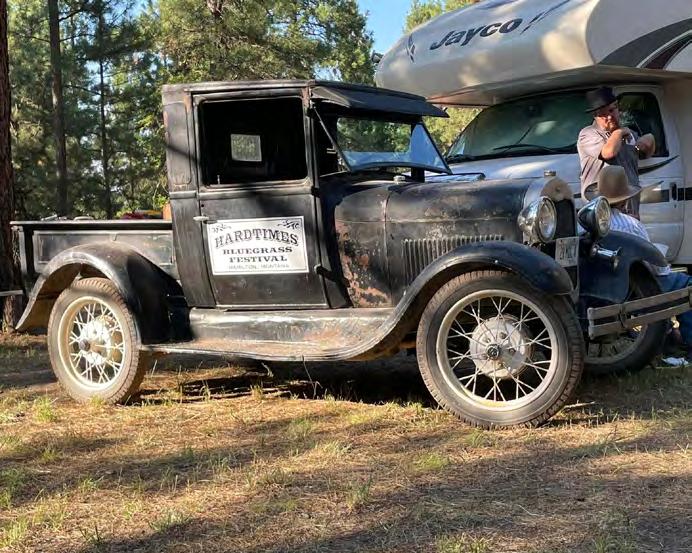
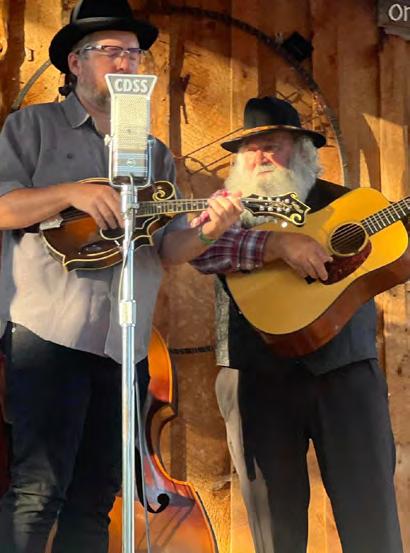
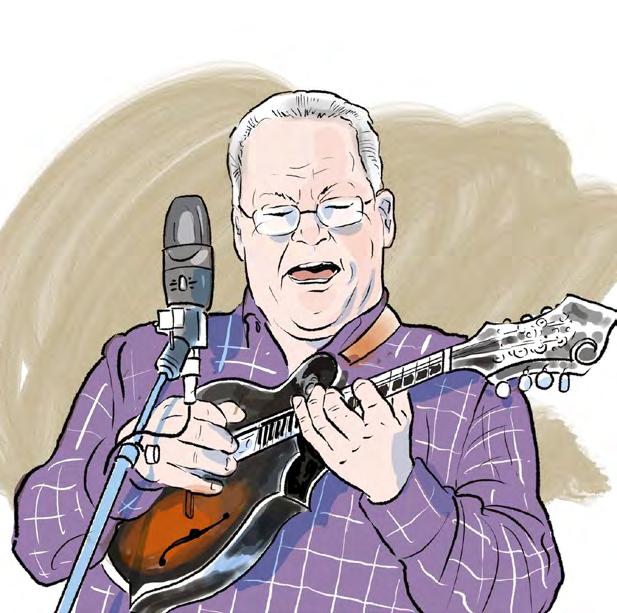
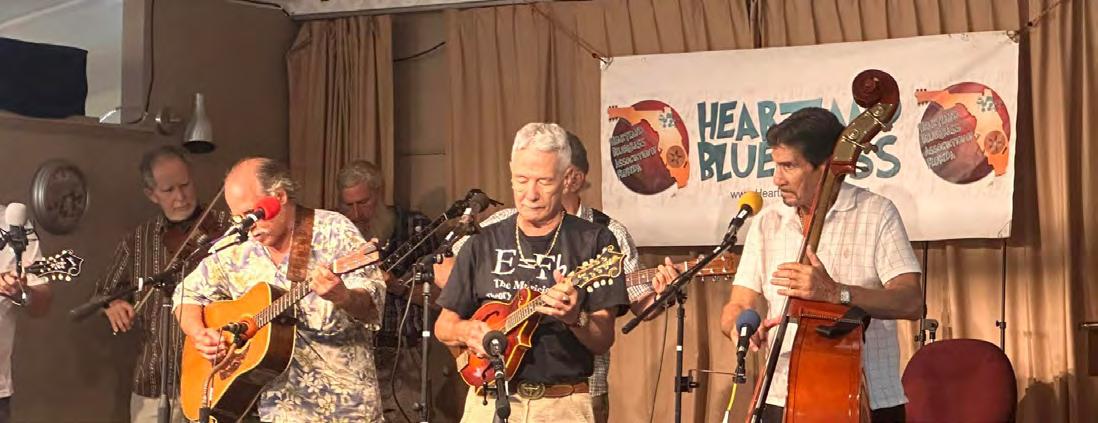

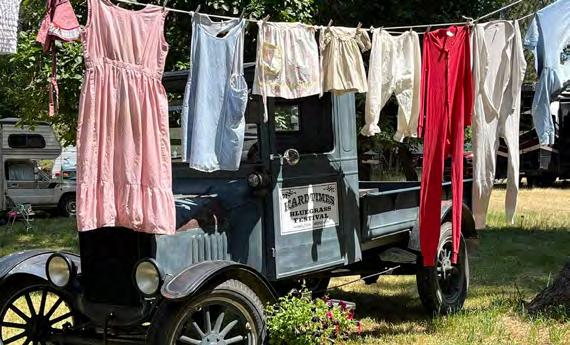
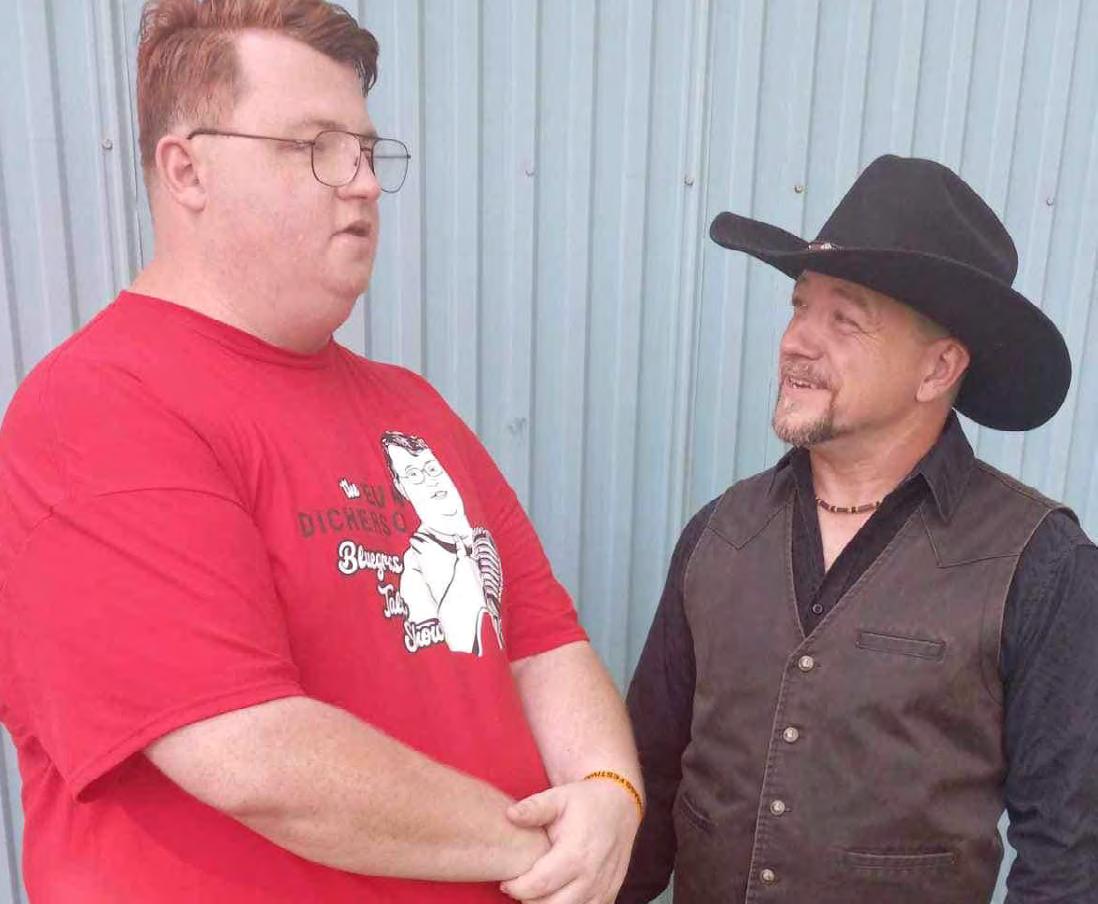

59




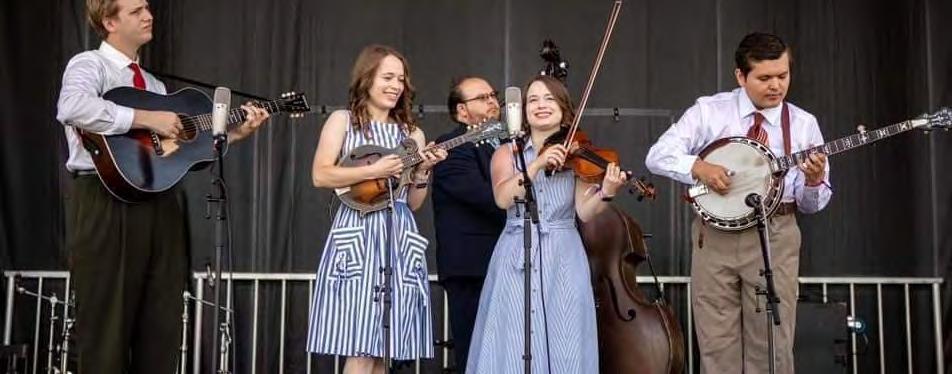
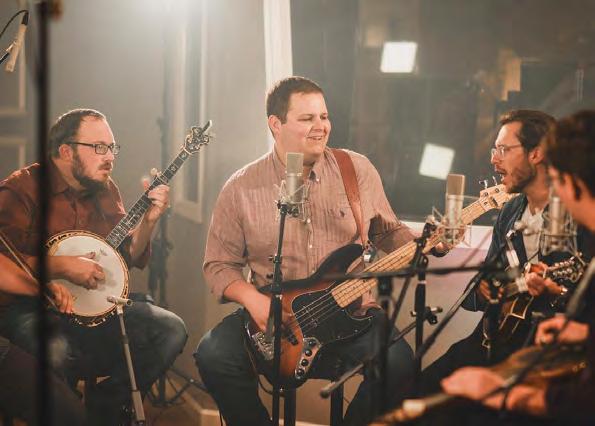


60

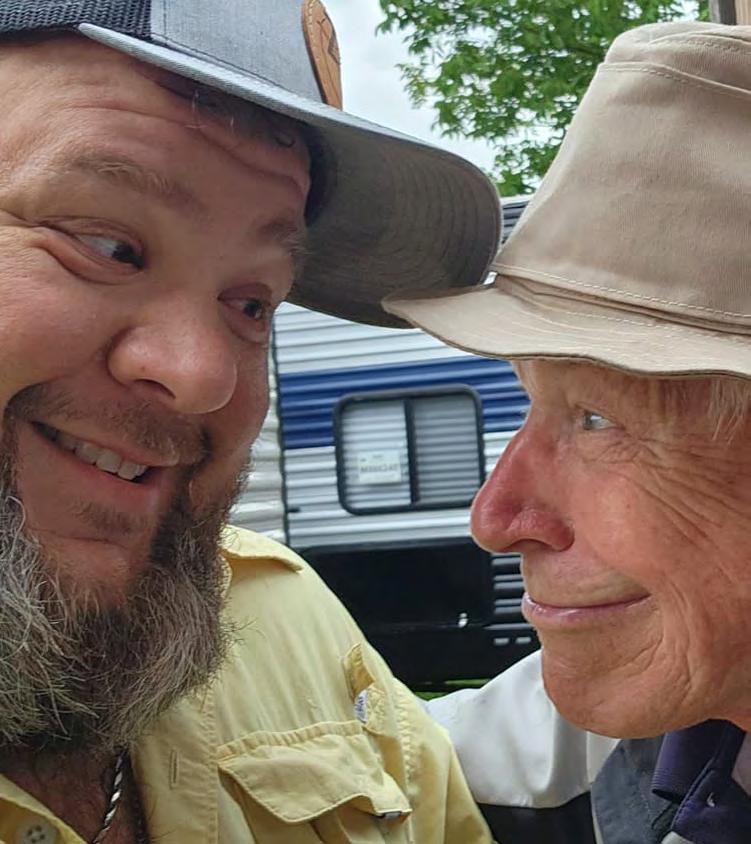

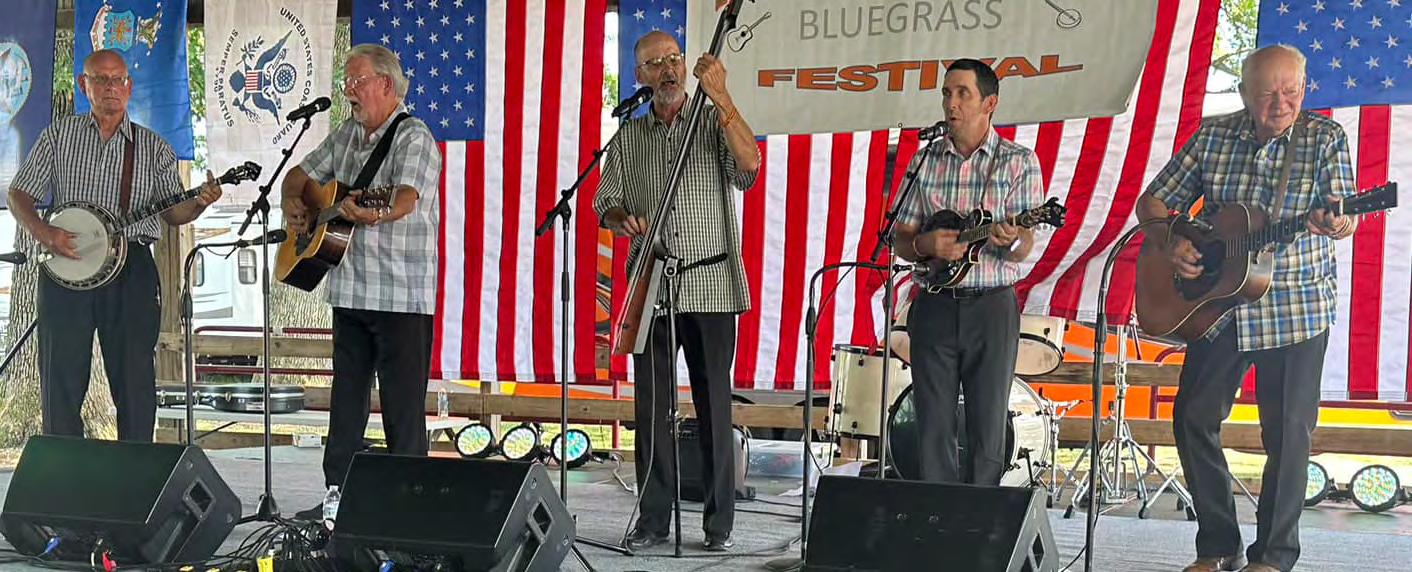

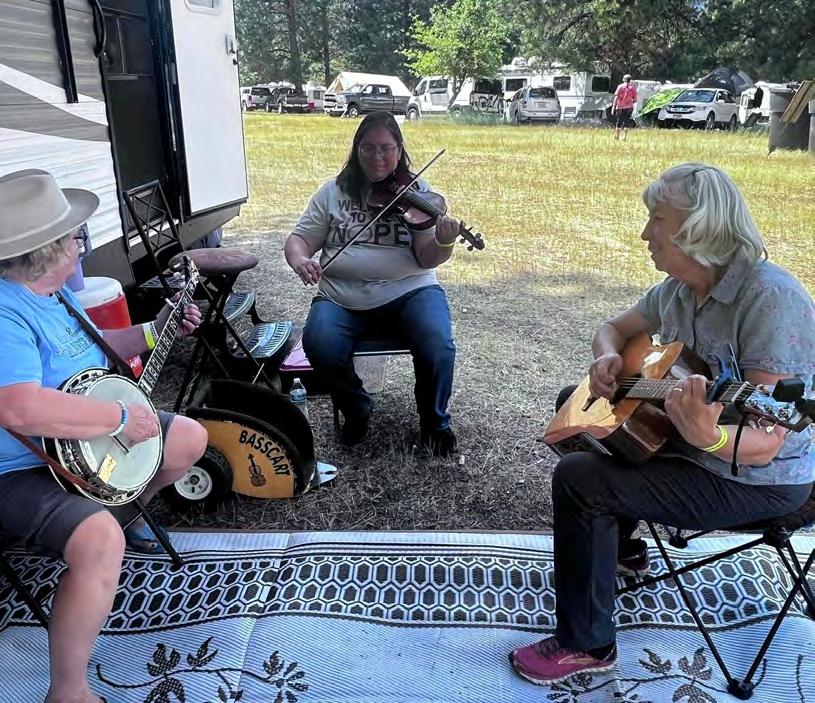
61

62











































































































































